Philippinen
Open here
the map of the Philippines
OpenStreetMap
- Veröffentlicht unter ODbL
Typhoon
Rubi ist auf dem Weg nach Samar, 6. Dezember 2014
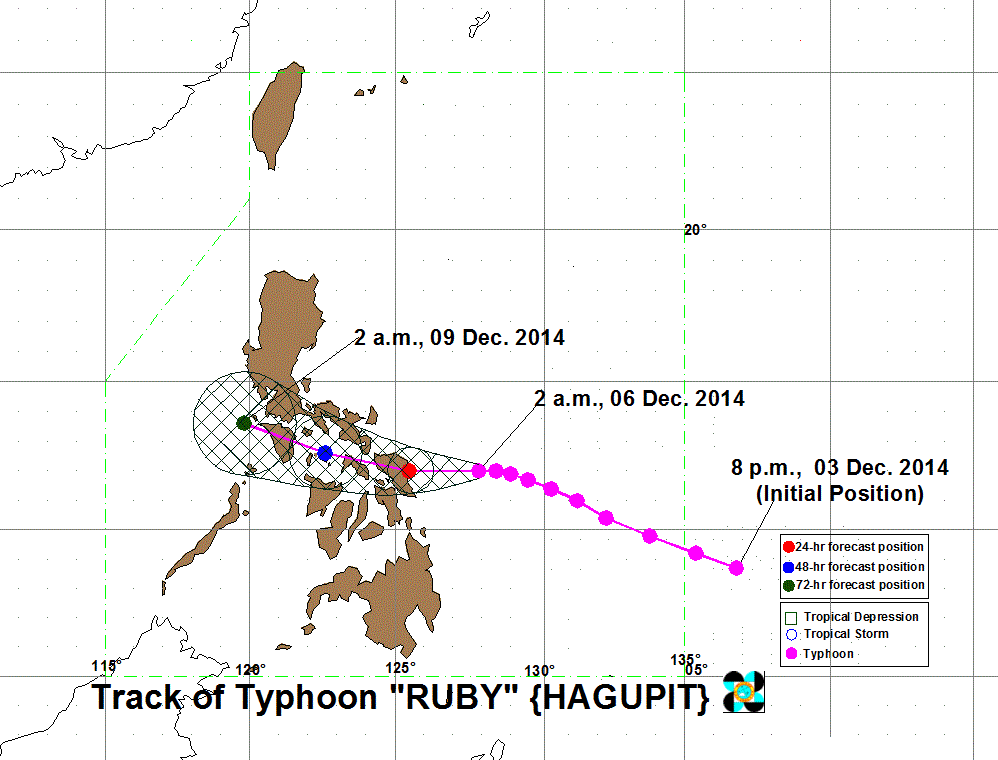
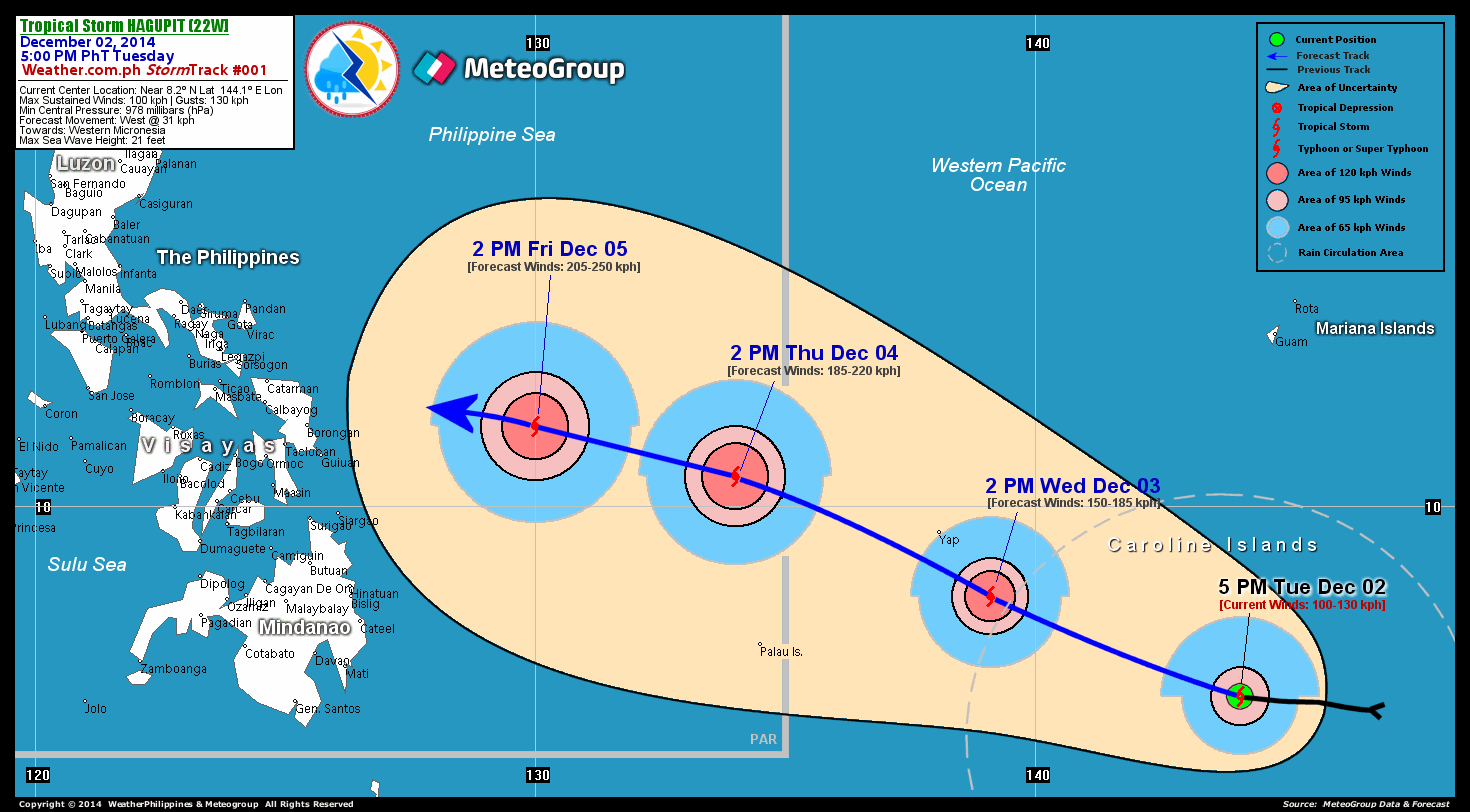
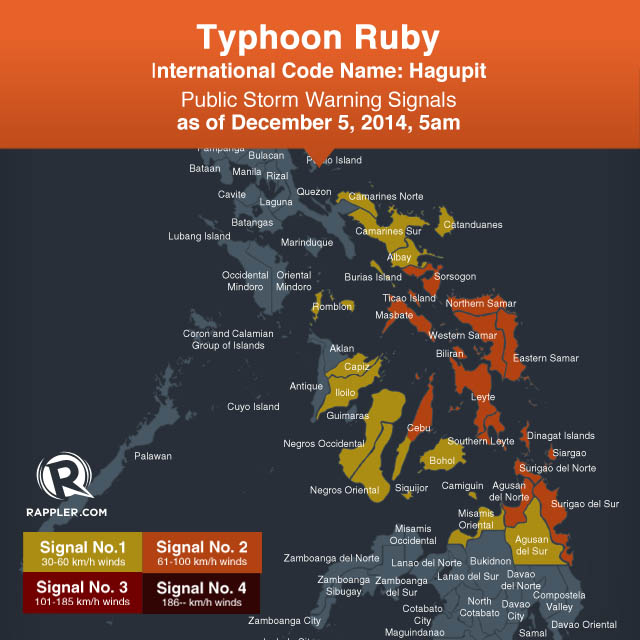
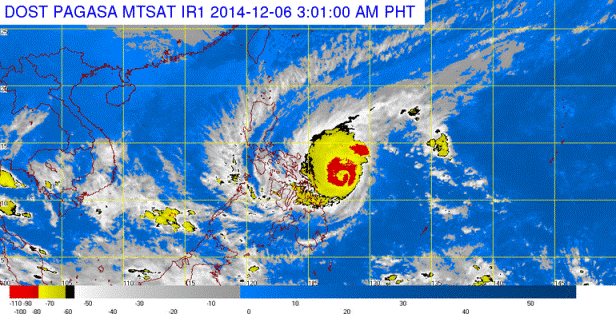
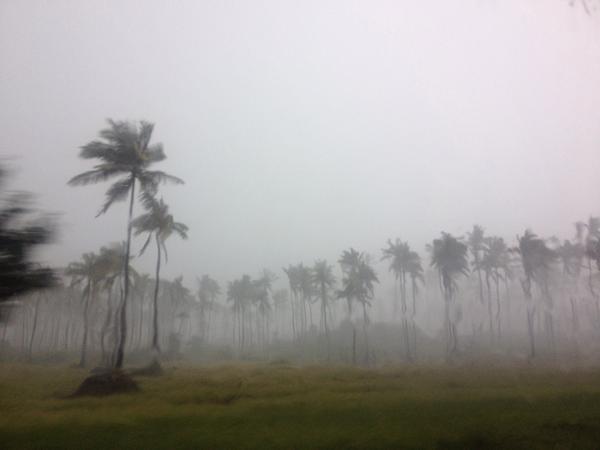
near
Sorsogon
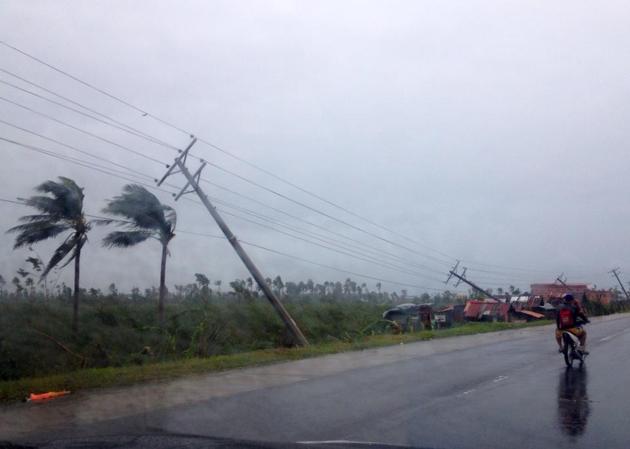
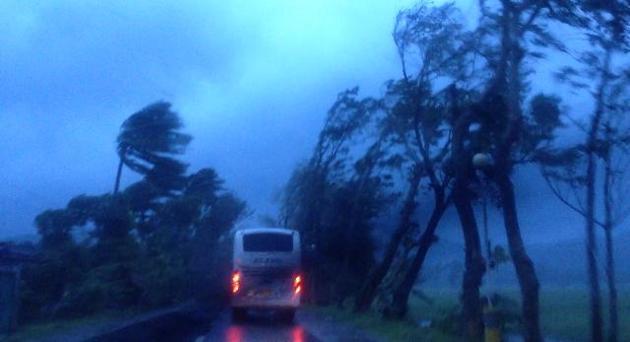
highway to
Matnog
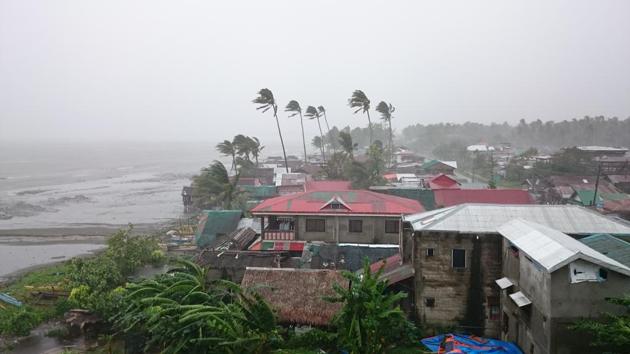
Calbayog in
Samar
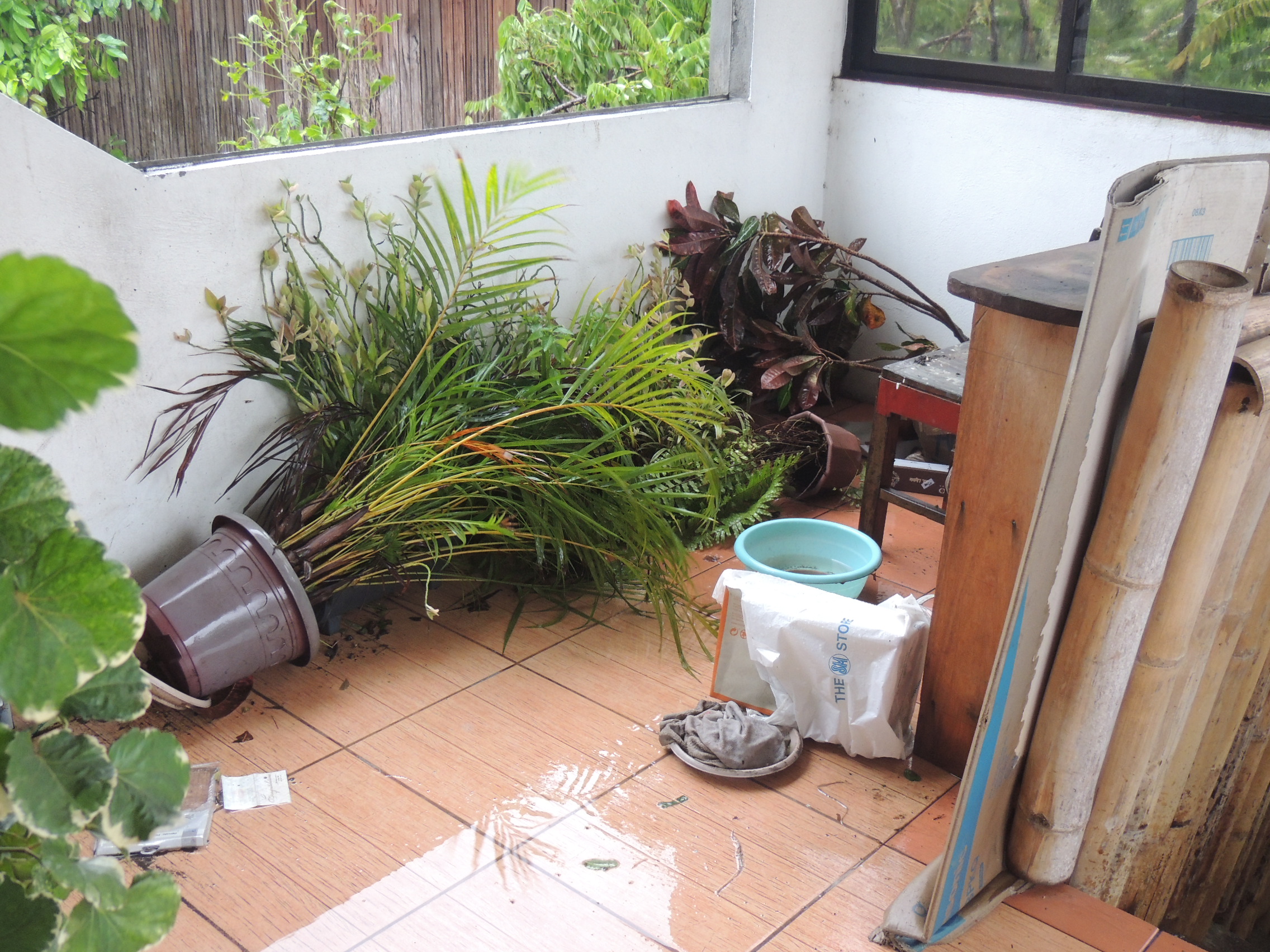
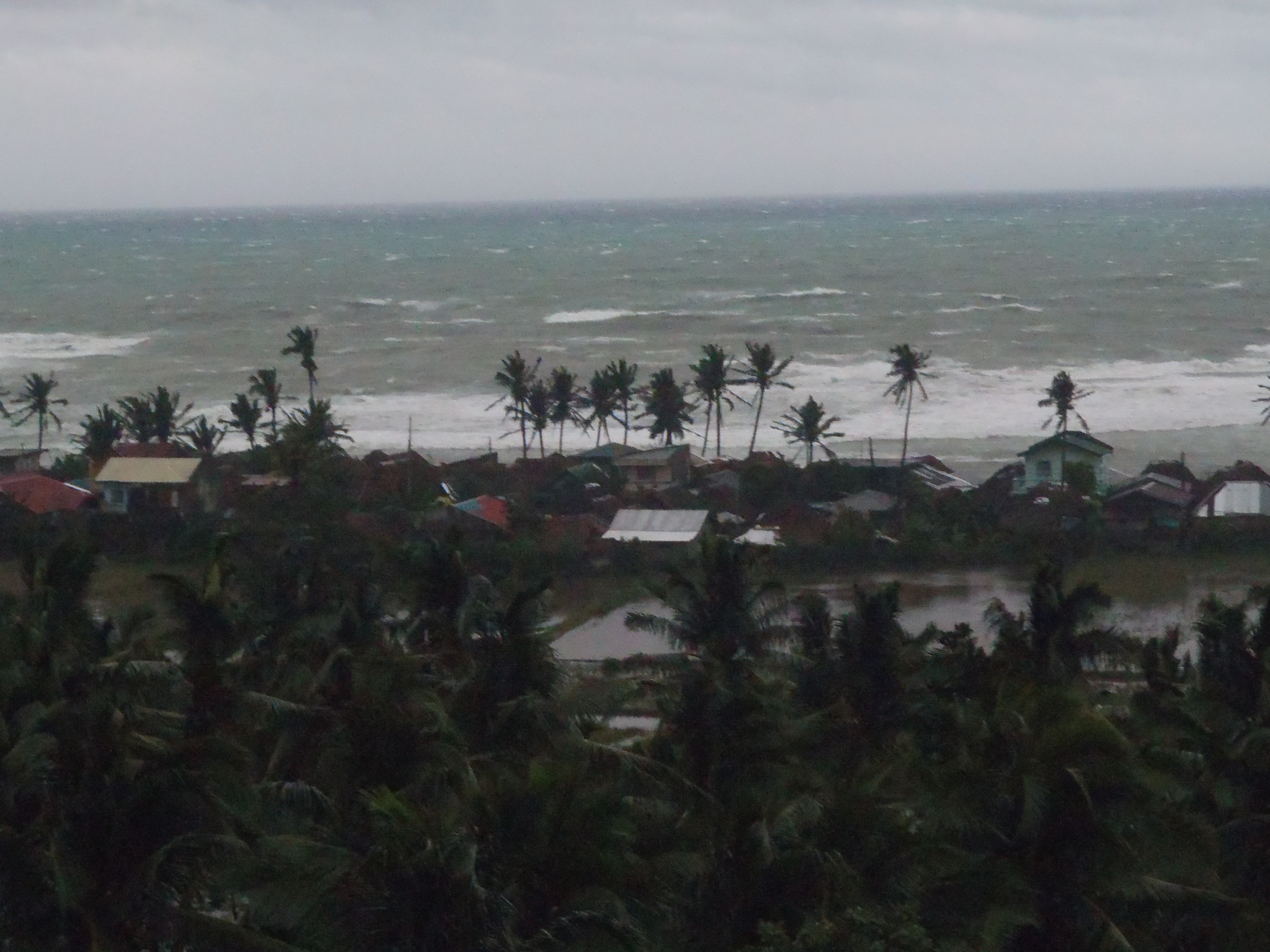
Bulusan,
Dancalan
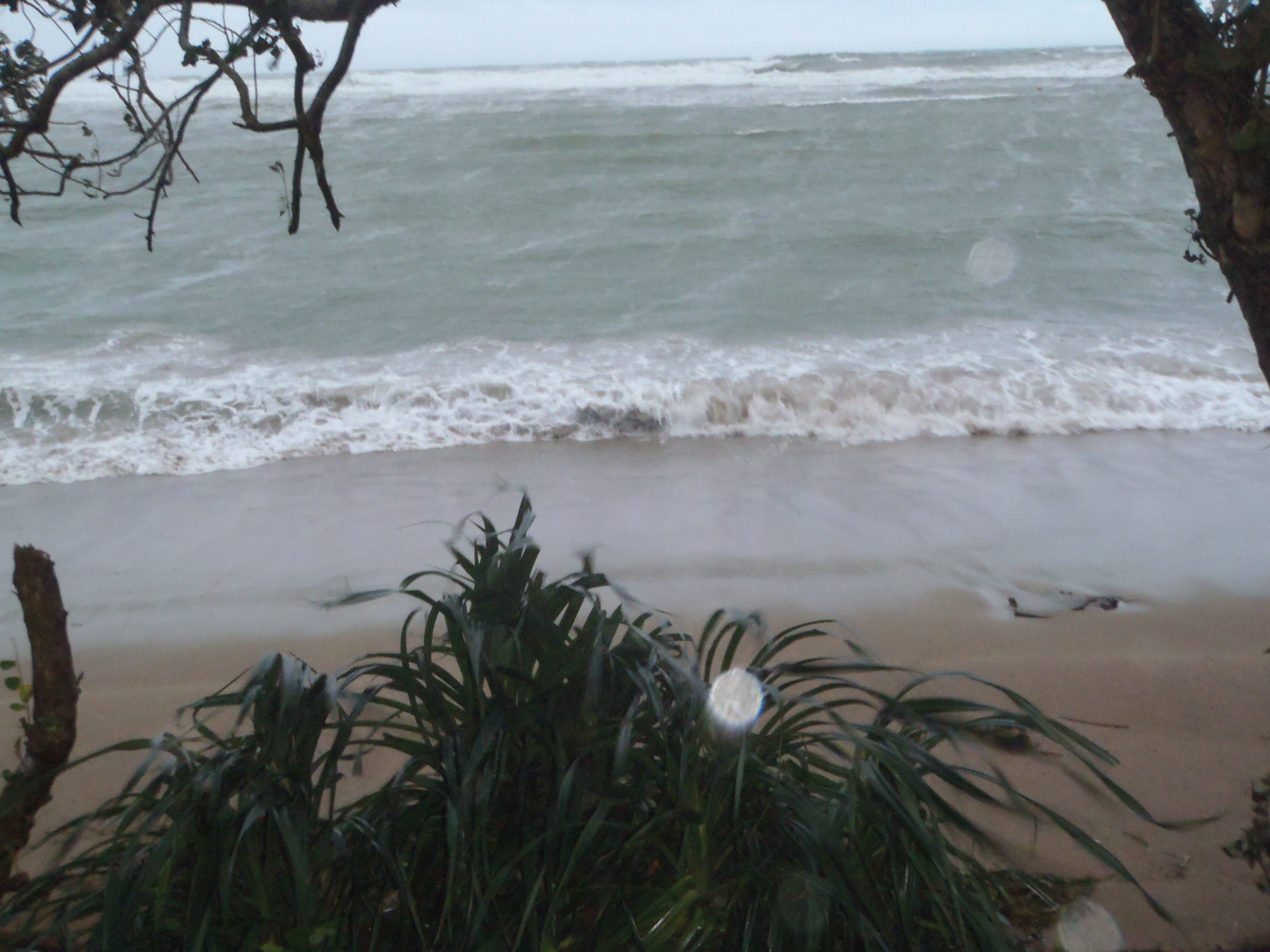
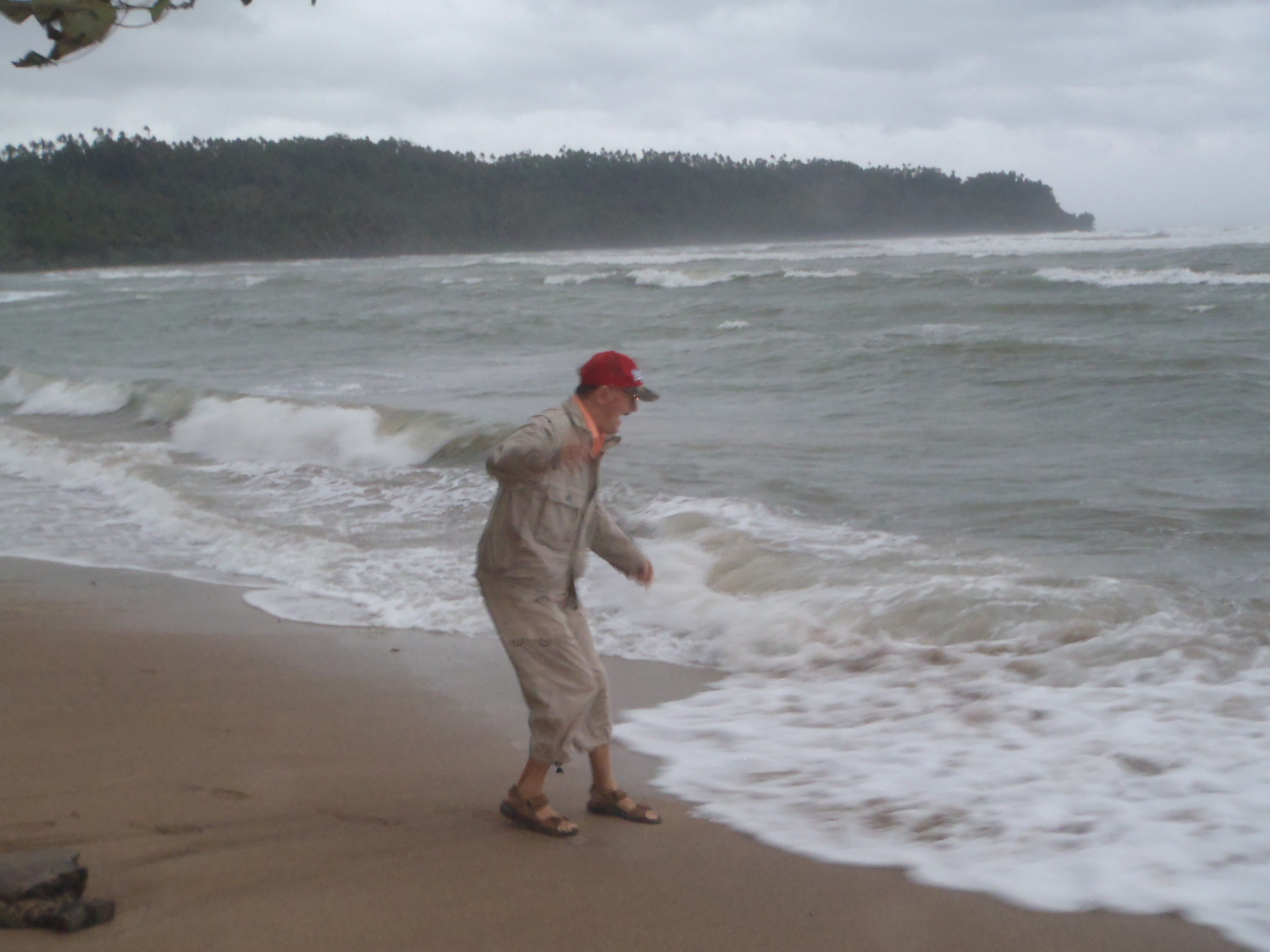
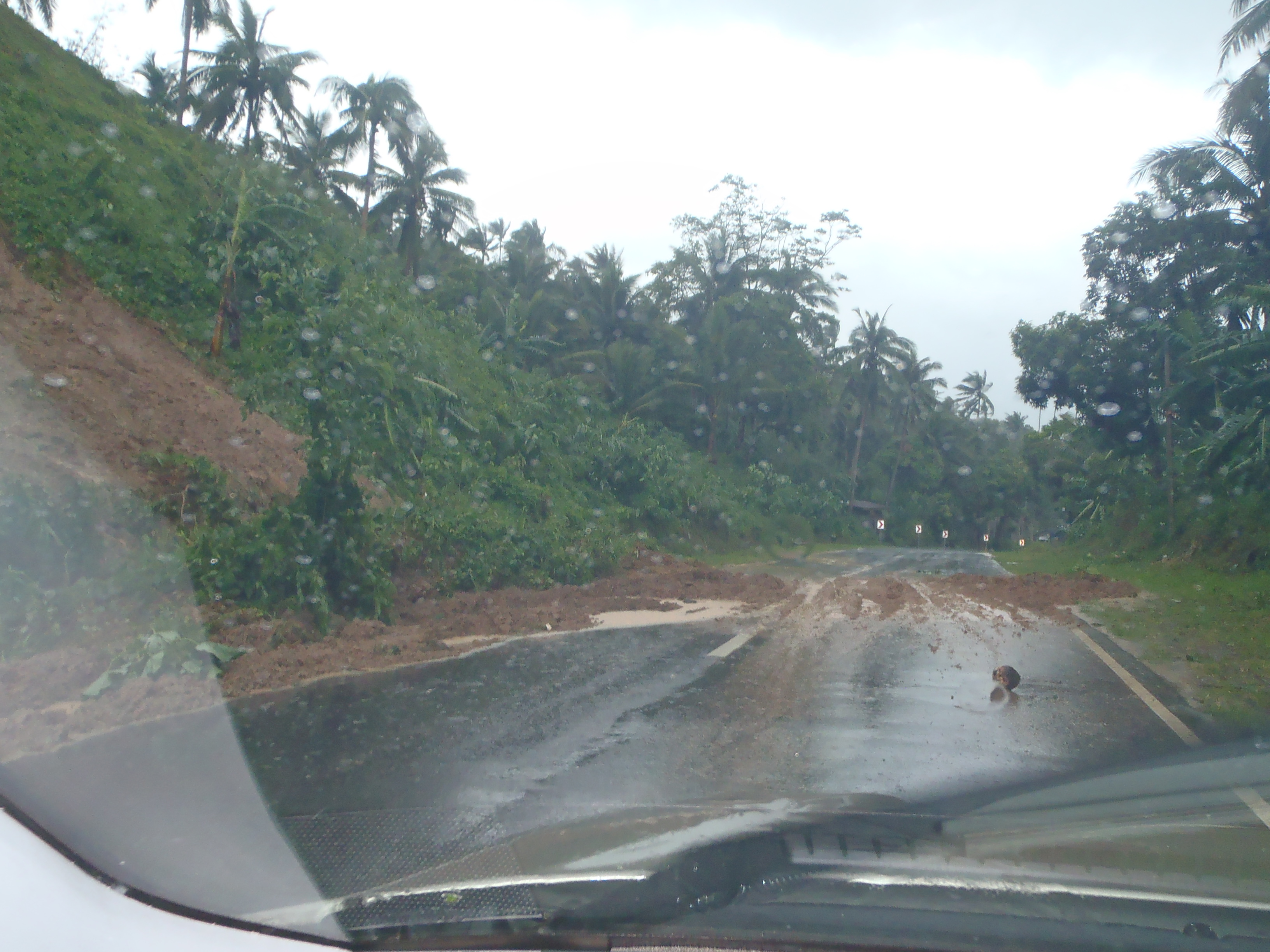
rice fields
and mud at the highway
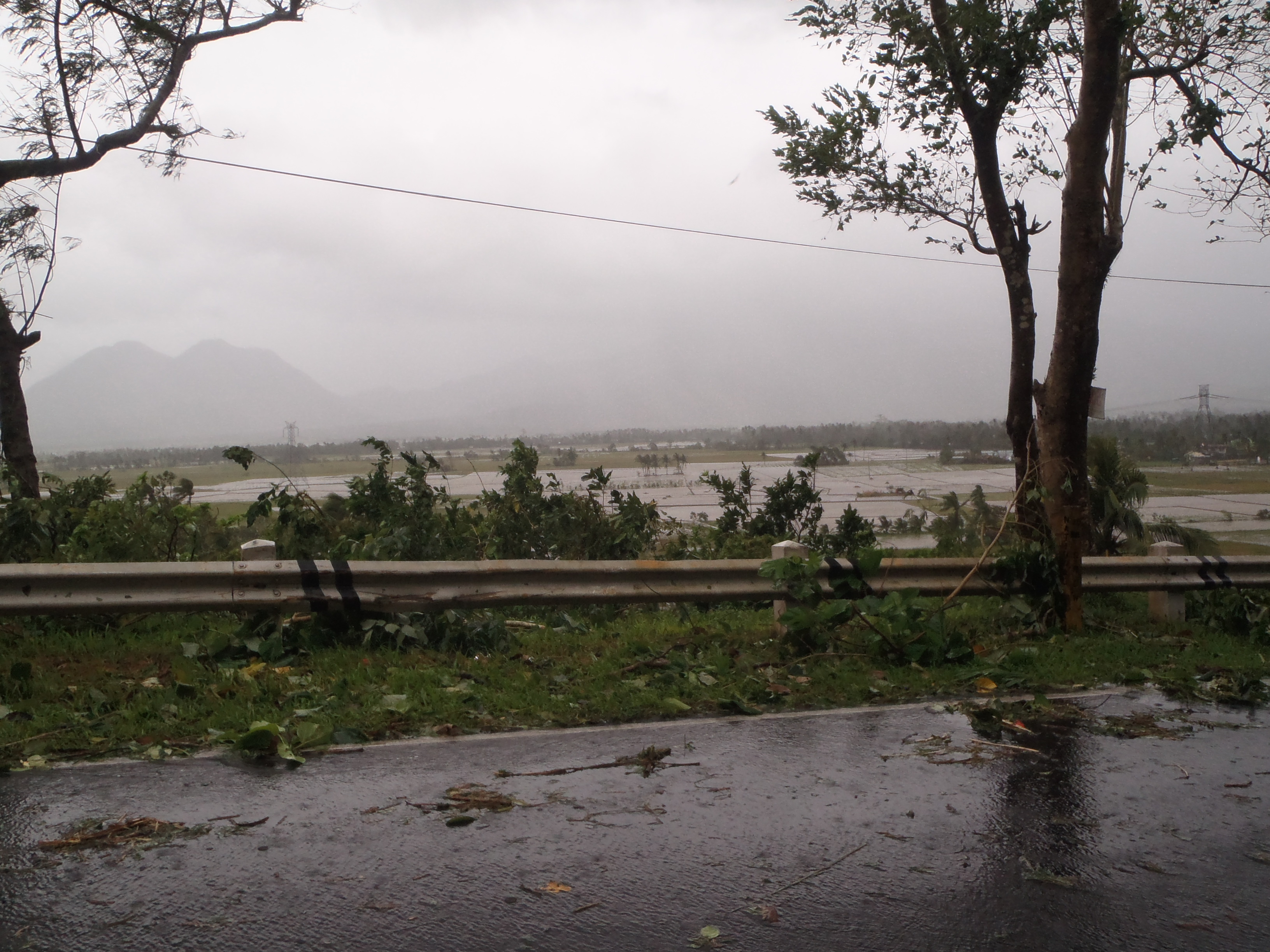
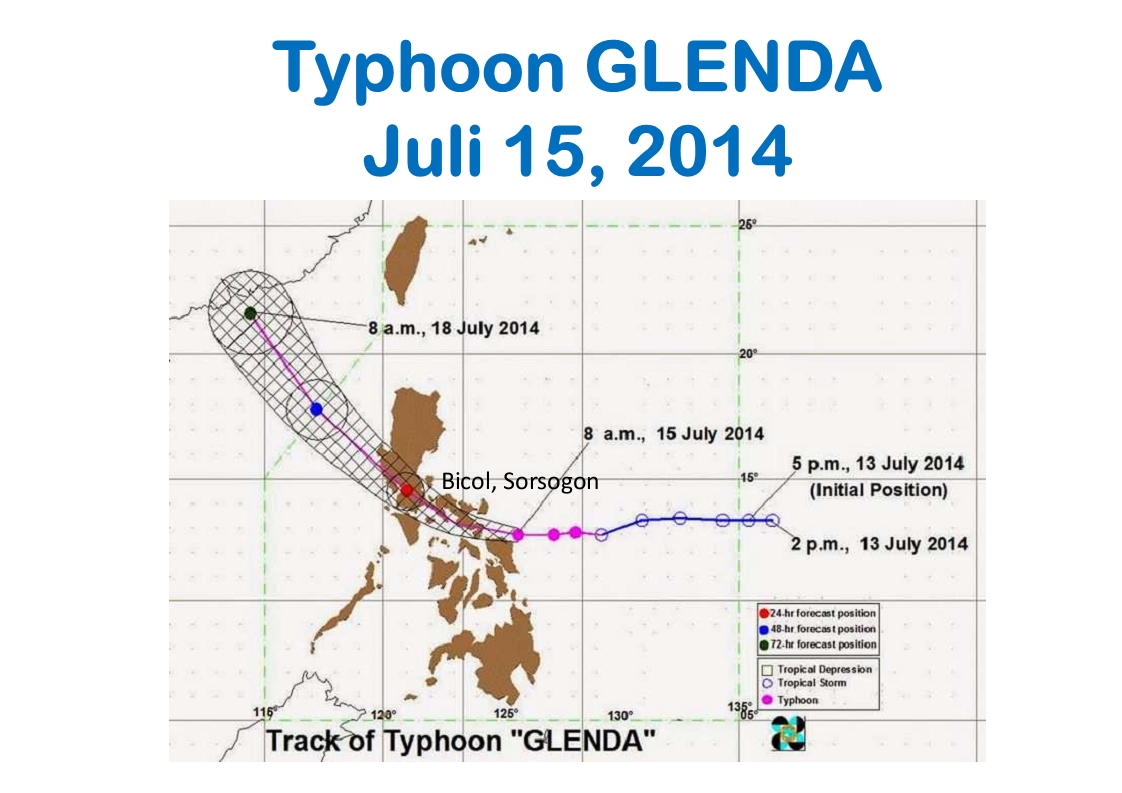
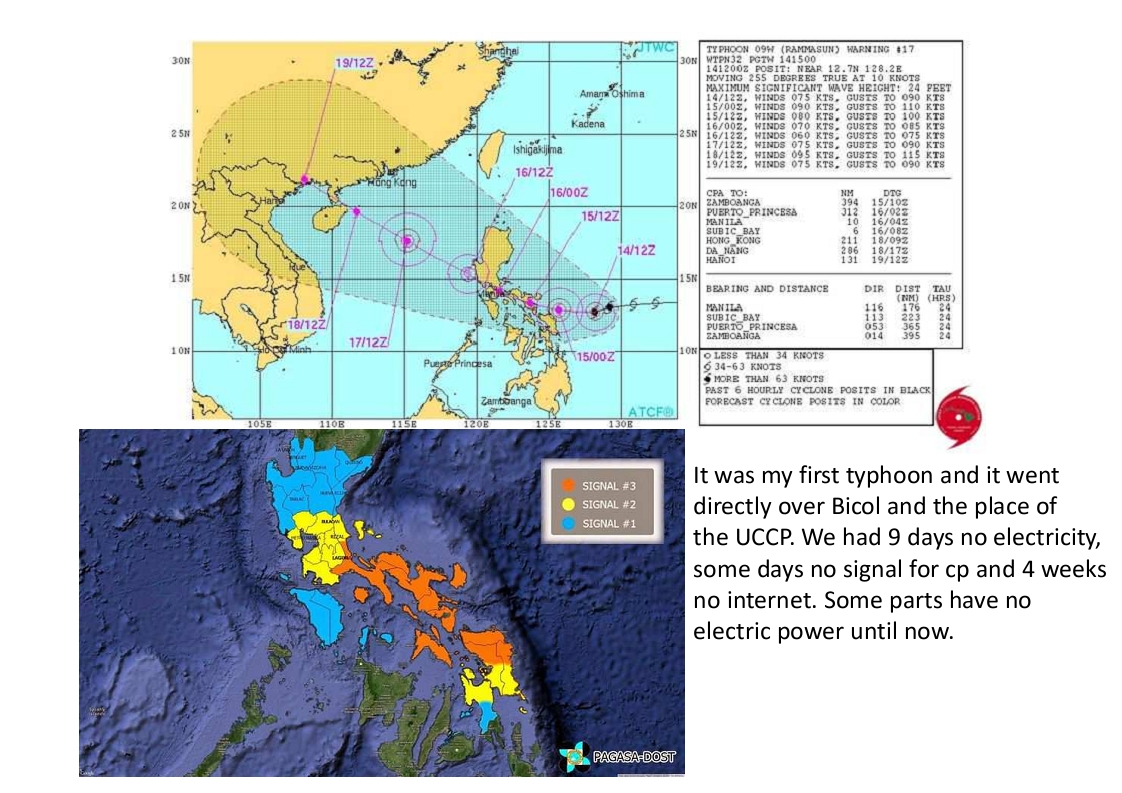
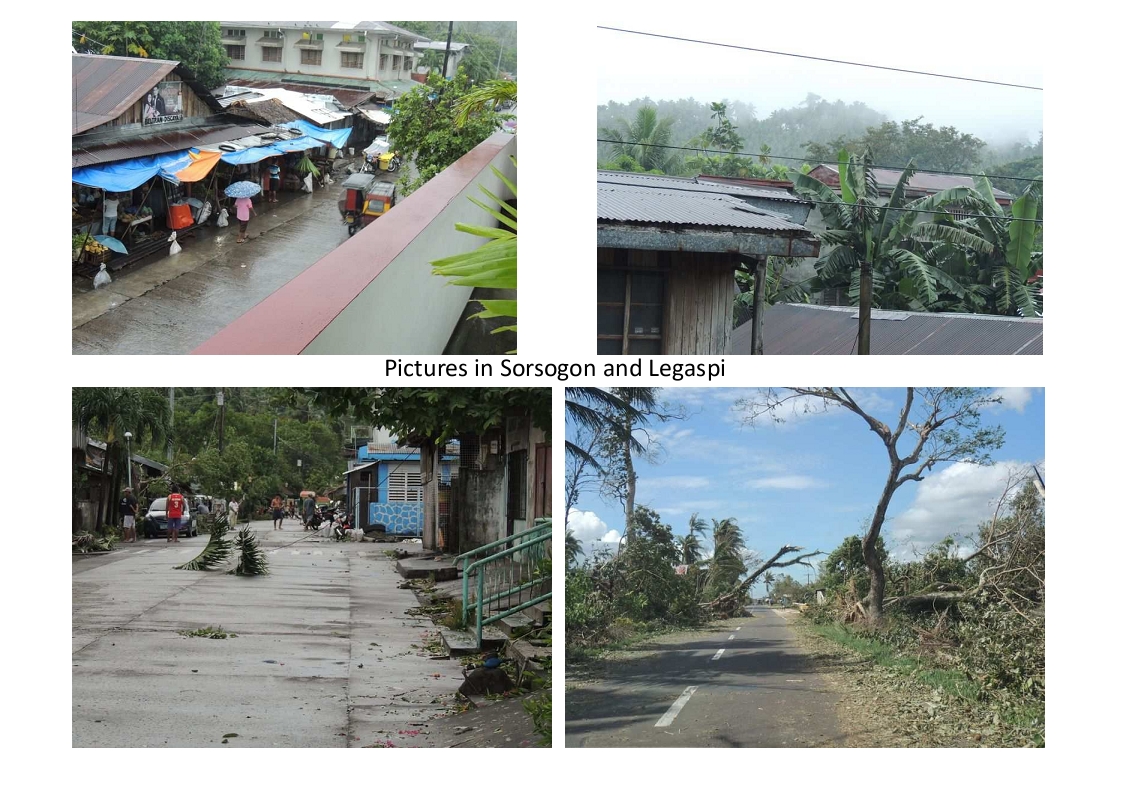
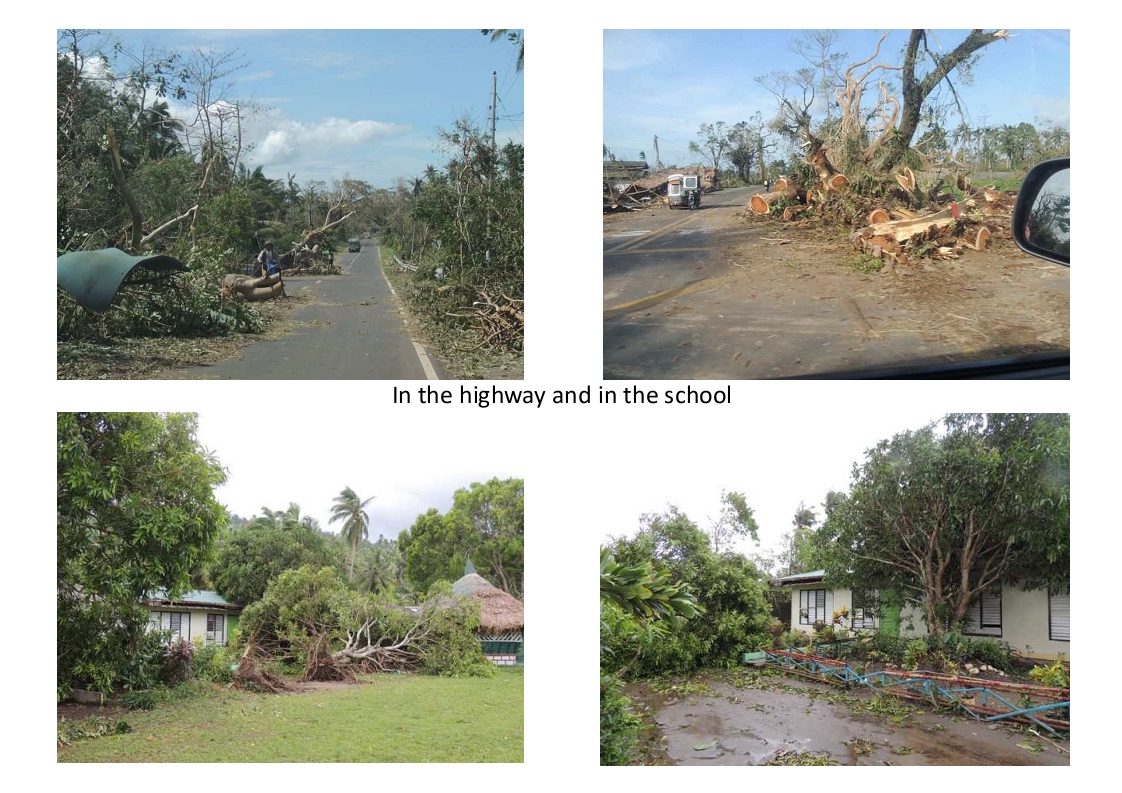
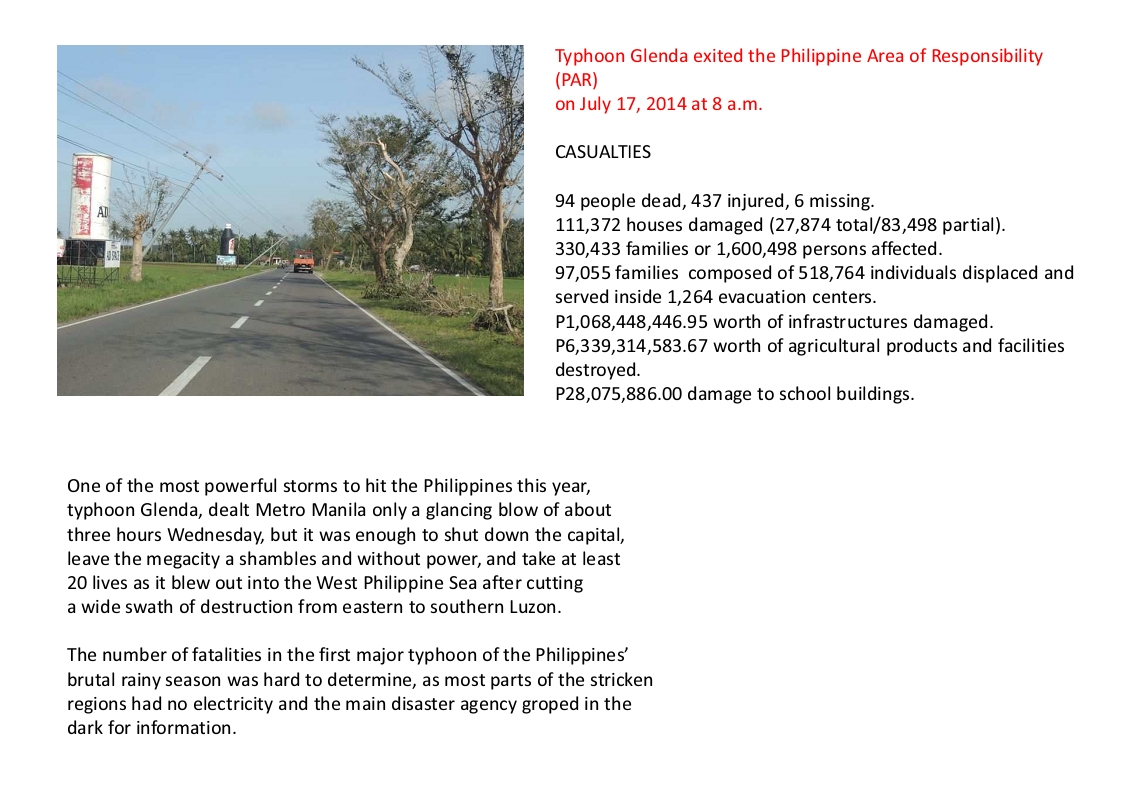
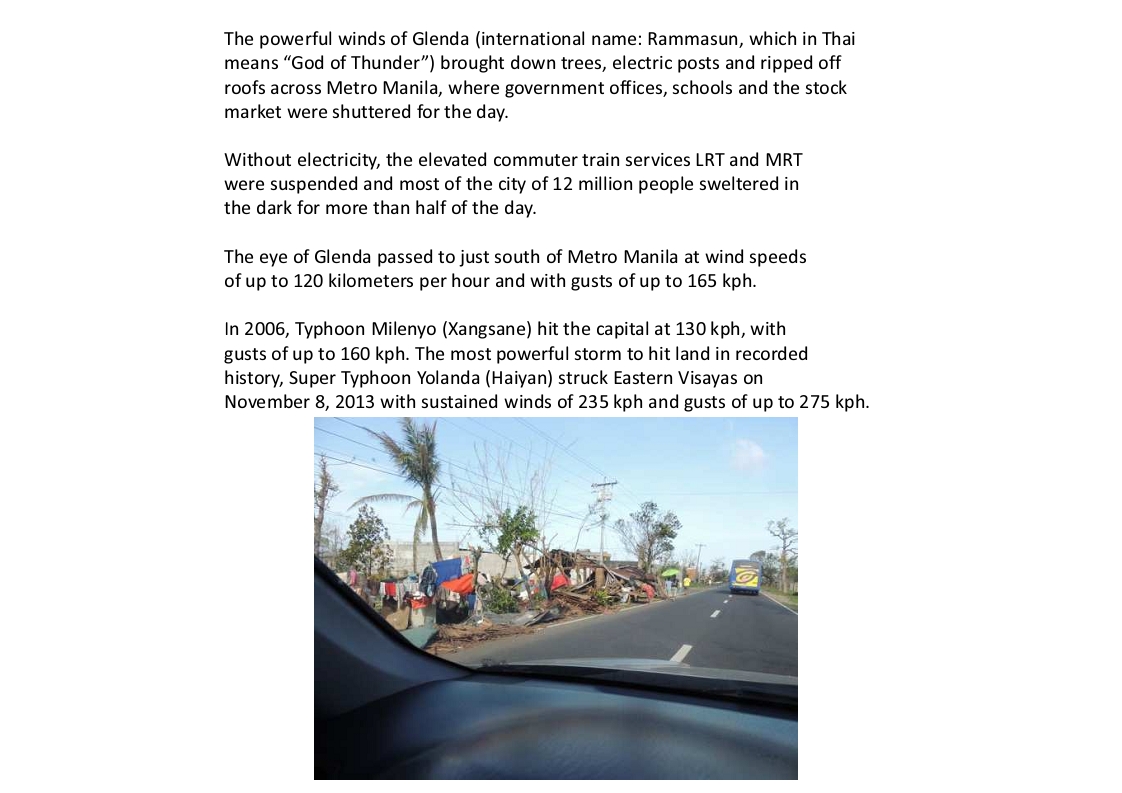
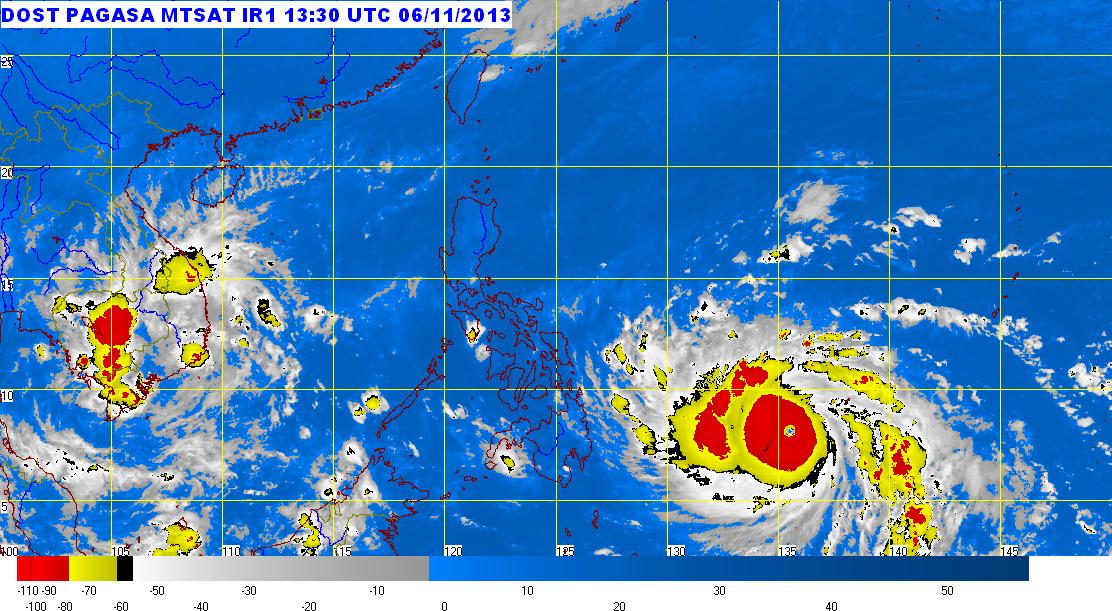
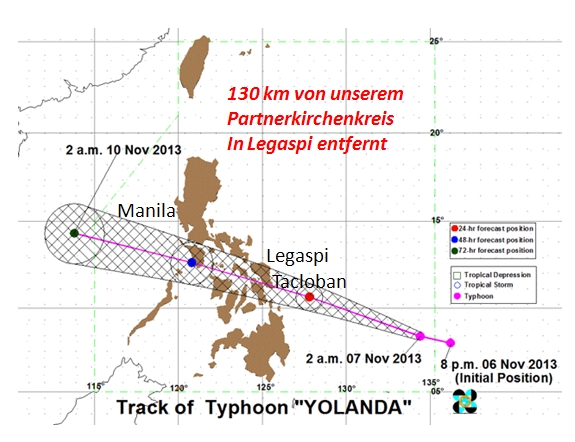
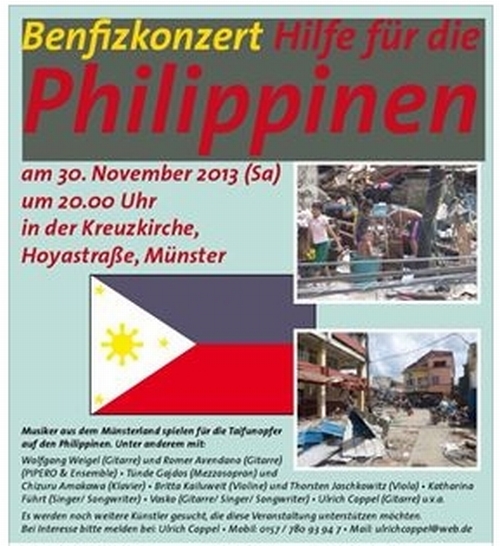
Die Zahl
der Opfer könnte noch weiter steigen: Durch den Taifun
"Haiyan" ("Yolanda") sind auf den Philippinen offenbar mindestens
10.000 Menschen ums Leben gekommen. Diese Zahl beziehe sich alleine auf
die Provinz Leyte mit ihrer Hauptstadt Tacloban, sagte der regionale
Polizeichef Elmer Soria.
"Haiyan", einer der schwersten Tropenstürme aller Zeiten, war
am Freitag mit voller Wucht auf die ostphilippinischen Inseln Leyte und
Samar getroffen. Noch einen Tag zuvor hatte das Rote Kreuz die
Opferzahl auf mehr als 1000 geschätzt. Doch genaue Zahlen sind
einfach nicht zu nennen. Das Chaos ist noch zu groß, um einen
klaren Überblick zu gewinnen. "Es handelt sich um ein enormes
Ausmaß an Zerstörung", sagte Sebastian Rhodes
Stampa, UN-Chefkoordinator für Katastrophen-Einsätze.
"Etwas von einer solchen Größenordnung habe ich das
letzte Mal nach dem Tsunami im Indischen Ozean gesehen."
In Tacloban blockierten umgeknickte Strommasten und Bäume die
Straßen, der Flughafen und zahlreiche Häuser wurden
zerstört, Meerwasser bahnte sich seinen Weg durch die
200.000-Einwohner-Stadt knapp 600 Kilometer von der Hauptstadt Manila
entfernt.

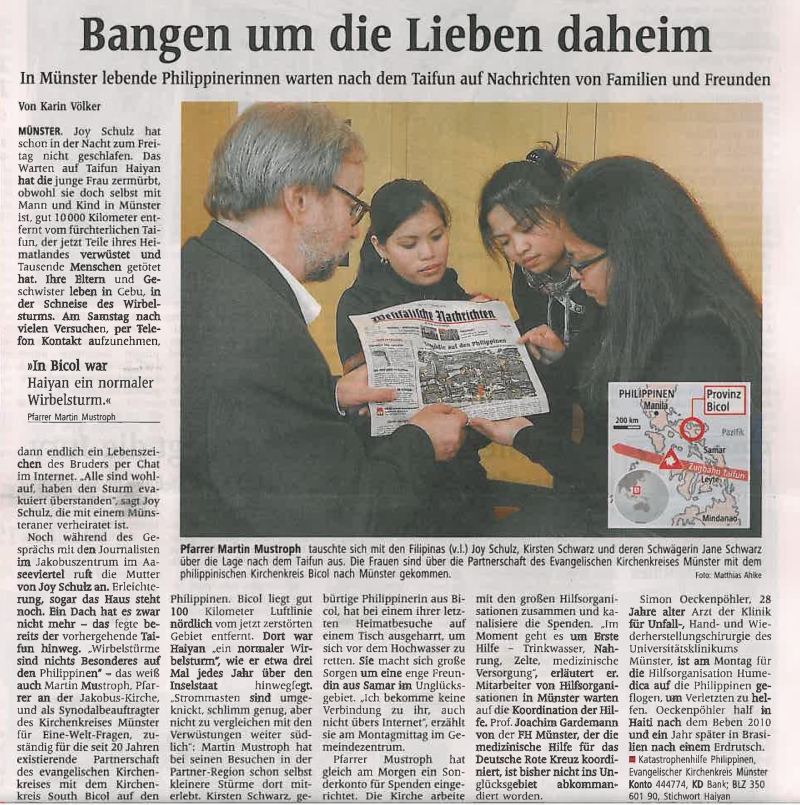
10.12.2013, Yolanda - super
typhoon ("Haiyan")
A month
after one of the strongest typhoons ever recorded hit the Philippines, masses of survivors are living amid rubble in
rebuilt shanty homes and experts say reconstructing destroyed
communities will take years.
The sight of people sleeping and cooking in wasteland towns highlights
the overwhelming problems as an initial, frenzied emergency relief
effort transforms into one focused on long-term rehabilitation.
"A lot of people have received emergency assistance, but this is just
the beginning," Matthew Cochrane, a spokesman for the United Nations
Office for the Coordination of Humanitarian Affairs in the worst-hit
city of Tacloban, told AFP.
The Philippines endures more than 20 major storms a year but Super
Typhoon Haiyan was the most destructive on record, with at least 5,796
people killed and another 1,779 missing, according to government data.
Haiyan also made history as having the strongest winds ever recorded to
make landfall, striking the eastern island of Samar with gusts of 315
kilometres (195 miles) an hour.
But surprise storm surges proved to be more devastating than the winds,
sending walls of water up to two storeys high through dozens of mostly
poor coastal communities on Samar and neighbouring Leyte island.
More than a million homes were damaged or destroyed, while water rushed
through schools and other supposedly safe coastal buildings used as
evacuation centres, killing many people sheltering there.
Permanent homes a top priority
Cochrane said one of the top priorities, exactly one month after Haiyan
struck on November 8, was building new homes and communities for
roughly 500,000 families.
But with the process expected to take up to five years and cost
billions of dollars, many people have already left evacuation centres
and started the rebuilding themselves, often using salvaged material.
In Tacloban, 81-year-old Gnerio Trinidad sat at the weekend inside her
tiny wooden home that was rebuilt on stilts above a putrid swamp of
debris, as her neighbours threw broken furniture and shattered coconut
trees onto a fire.
"I'm afraid that another typhoon will come, but there's nowhere else to
go... if the government gives us another place to live, we will move,"
Trinidad said as her three grandchildren played in the house.
In a neighbouring district, 18-year-old Ronnie Melaflor had recently
finished erecting a makeshift Christmas tree using a bamboo pole and
tinsel. It stood on broken concrete and tiles next to his family's
wooden hut.
"We can't put a tree inside, but I still want to celebrate Christmas,"
said Melaflor, who escaped the devastation wrought upon his community
by sheltering with his seven siblings and parents in a nearby school.
Outside of the cities, the government and relief workers are rushing to
help tens of thousands of farmers who lost their livelihoods in the
storm.
The next rice harvest must be planted this month, so urgent programmes
are underway to clear farms of debris, fix irrigation channels and get
seeds out to remote areas.
"This is a huge issue for food security... it's going to be an enormous
challenge to meet the deadline," Ian Bray, a spokesman for
international charity Oxfam, told AFP.
Hundreds of thousands of people will also need some form of help to
address the mental trauma of living through what many in the mainly
Catholic country have likened to hell.
"In a disaster like this it’s not just about meeting the
physical reconstruction needs, it's about addressing the mental scars,"
said International Federation of the Red Cross spokesman Patrick
Fuller.
Church services on Sunday were part of that healing process, with
survivors listening to sermons focused on hope and resilience.
"Whatever hardships and sufferings we have had, we should try to move
on and forget and start all over again," Father Isagani Petilos told a
morning mass at Tacloban's Santo Nino Church, which still has missing
windows and holes in its roof.
"We have to learn to accept what happened in our lives, and we can
still hope that there's a beautiful life ahead."
But candlelight prayer vigils at mass graves as night fell, to
commemorate one month since the disaster, showed the priest's advice
would be impossible for many to follow.
Hundreds turned up at the grave sites to light candles and chant
prayers in unison, including Irish Ann Maraya, a 20-year-old nanny who
lost her parents, sister, aunt and an uncle.
"I came to pray that their souls will rest in peace," Maraya said.
10.11.2013,
Yolanda - super typhoon ("Haiyan")
nur ca 130
km südlich von unserm Partnerkirchenkreis UCCP
A super typhoon that destroyed entire towns across the Philippines is
believed to have
killed more
than 10,000 people, authorities said Sunday,
which would make it the country's deadliest recorded natural disaster.
The
horrifying new feared death toll from Super Typhoon Yolanda came as
the United States
pledged military help in the relief effort and as countless survivors
across a huge swathe
of the country remained without aid for a third day.
Ten thousand people were believed to have been killed in the worst-hit
province on Leyte,
regional police chief Elmer Soria told reporters in Tacloban, the
devastated provincial capital.
"We had a meeting last night with the governor and, based on the
government's estimates,
initially there are 10,000 casualties (dead). About 70 to 80 percent of
the houses and
structures along the typhoon's path were destroyed," Soria said.
The scenes in Tacloban,
a city of 220,000 people, and other coastal towns were reminiscent
of a tsunami aftermath, with concrete slabs the only part of many homes
remaining, vehicles
flipped over and power lines destroyed.
"This is destruction on a massive scale. There are cars thrown like
tumbleweed and the
streets are strewn with debris," said Sebastian Rhodes Stampa, the head
of a UN disaster
assessment coordination team, in Tacloban.
"The last time I saw something of this scale was in the aftermath of
the Indian Ocean tsunami," he said, referring to the 2004 disaster that
claimed about 220,000 lives.
Yolanda hit Leyte and the neighbouring island with maximum sustained
winds of around 315 kilometres (195 miles) on Friday, and generated
waves up to three metres (10 feet) high that surged deep inland.
However, while Leyte was believed to have been the worst hit, the
carnage extended across a 600-kilometre stretch of islands through the
central Philippines.
A few dozen other deaths had been confirmed in some of these areas, but
authorities admitted they were completely overwhelmed and many
communities were still yet to be contacted.
"We're still establishing command and control through logistics and
communications," military spokesman Lieutenant Colonel Ramon Zagala
told AFP.
He said among the communities yet to be contacted was Guiuan, a fishing
town of about 40,000 people on Samar island that was the first to be
hit after Yolanda swept in from the Pacific Ocean.
About 130 hundred kilometres to the west of Tacloban, the popular
tourist islands of Malapascua appeared to be in ruins, according to
aerial photographs, with people there unaccounted for so far.
"The coast guard commander cannot communicate with the area. They are
cut off in communications and from power," regional civil defence
director Minda Morante told AFP.
Deadliest natural disaster on record
The Philippines endures a seemingly never-ending pattern of deadly
typhoons, earthquakes, volcano eruptions and other natural disasters.
It is located along a typhoon belt and the so-called Ring of Fire, a
vast Pacific Ocean region where many of Earth's earthquakes and
volcanic eruptions occur.
However, if the feared death toll of above 10,000 is correct, Yolanda
would be the deadliest natural disaster ever recorded in the
Philippines.
Until Yolanda, the deadliest disaster was in 1976, when a tsunami
triggered by a magnitude 7.9 earthquake devastated the Moro Gulf on the
southern Philippine island of Mindanao, killing between 5,000 and 8,000
people.
In Washington, the Pentagon announced that US Defence Secretary Chuck
Hagel had responded to a request from the Philippines for military aid.
"Secretary Hagel has directed US Pacific Command to support US
government humanitarian relief operations in the Philippines in the
wake of Typhoon Yolanda," it said.
"The initial focus includes surface maritime search and rescue,
medium-heavy helicopter lift support, airborne maritime search and
rescue, fixed wing lift support and logistics enablers."
United Nations leader Ban Ki-moon also pledged that UN humanitarian
agencies would "respond rapidly to help people in need".
Ban is "deeply saddened by the extensive loss of life" and devastation
caused by Yolanda, said UN spokesman Martin Nesirky in a statement.
06.11.2013,
Yolanda - maybe super typhoon
(UPDATE) As the country braces itself for what could be a super
typhoon, Department of Science and Technology (DOST) Sec. Mario Montejo
warned residents in the path of the storm to prepare for the worst.
In an interview with DZMM's Ted Failon, Montejo said the weather
disturbance, with international name "Haiyan," could intensify into a
powerful howler with winds reaching 200 kilometers per hour that could
take down and uproot even coconut trees.
"We will not be surprised if it hits 200 (kph). Para maimagine natin na
200. Maimagine natin na what happened to Pablo. What happened to the
latest typhoon in Cagayan na 132 (kph). This is much stronger. So yung
mga niyog, matututmba yang mga yan," Montejo said.
He also said the storm could "rip out the roofs of houses" and old
structures such as churches. Montejo also advised residents to anchor
or tie down the roofs of their houses.
"Ang paghahanda ngayon ay kasali na ang pagtatali ng mga bubong. Nakita
naman natin yung nangyari sa Pablo, including yung mga simbahan.
Natanggal yung bubong. We still have time today and tomorrow (na)
magtali," Montejo said.
Montejo also confirmed that the storm, which will be named "Yolanda" as
soon as it enters the Philippine Area of Responsibility (PAR) this
week, has "so much energy" and can very well intensify into a
supertyphoon, a classification for weather disturbances that pack winds
of up to 200 kilometers per hour.
"Inaasahan natin na this will intensify pa. Papasok sa Philippine area
of responsibility tomorrow. So baka lang umabot it sa super typhoon o
signal number 4," he said.
He also said they predict heavy to intense rains in areas covered by
the storm's 600 kilometer diameter.
According to the 4:00 p.m. weather bulletin issued by weather bureau
PAGASA, which is under the DOST, “Haiyan” was
located 1,221 km east of Mindanao with maximum sustained winds of 175
kilometers per hour and gustiness of up to 210 kilometers per hour. It
is forecast to move west northwest at 30 kilometers per hour.
In a briefing on Wednesday, the weather bureau said the typhoon will
make landfall over the Eastern Visayas region, specifically the
Samar-Leyte area. The eye of the storm is expected to cross the
provinces of Northern Cebu, Northern Panay, Masbate, Romblon, Mindoro
and Northern Palawan.
Floods and landslides are expected along the track of the weather
disturbance.
PAGASA earlier said they might have to raise the rarely-used signal
number 4, meaning that the typhoon has very strong winds, powerful
enough to uproot large trees, topple electric posts and tear off roofs
from houses.
The weather bureau also said this might be the strongest typhoon to hit
the country this year. It is forecast to be stronger than Typhoon
Pablo, which killed more than a thousand people in parts of Mindanao
and Visayas last year.
Forced evacuation was implemented last night in coastal towns in
Tacloban City in anticipation of the typhoon, ABS-CBN's Sharon Evite
reported.
ABS-CBN's Thea Omelan meanwhile said Albay Governor Joey Salceda
earlier advised residents to move to and take shelter in bigger houses
that could withstand the winds the typhoon is expected to bring.
The provinces of Cebu, Leyte and Bohol previously announced class
suspensions in all levels on Nov. 7 and 8 due to the weather
disturbance.
This typhoon will be the 24th storm to hit the Philippines this year.
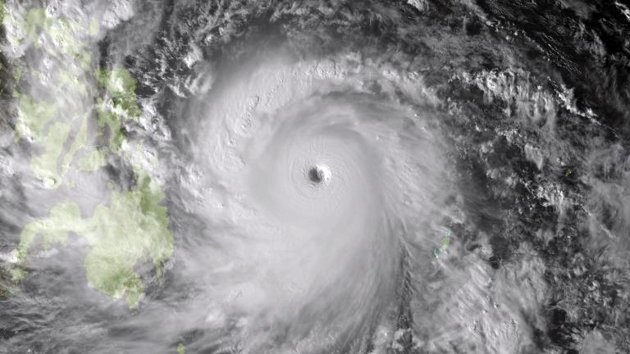
the eye of the typhoon "Yolanda"
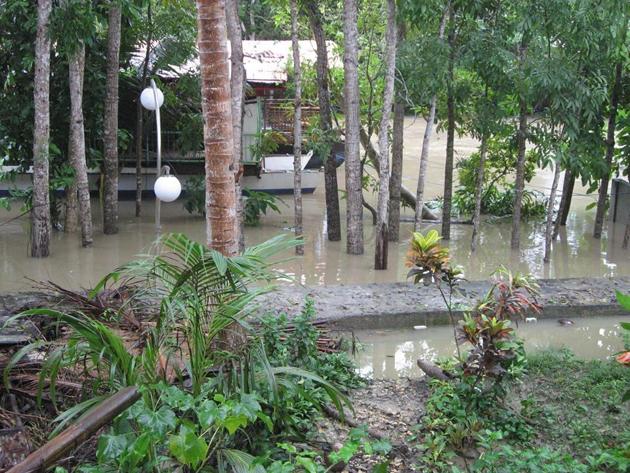
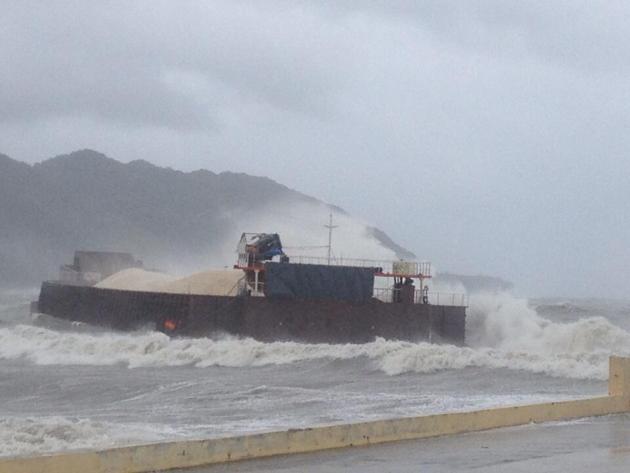
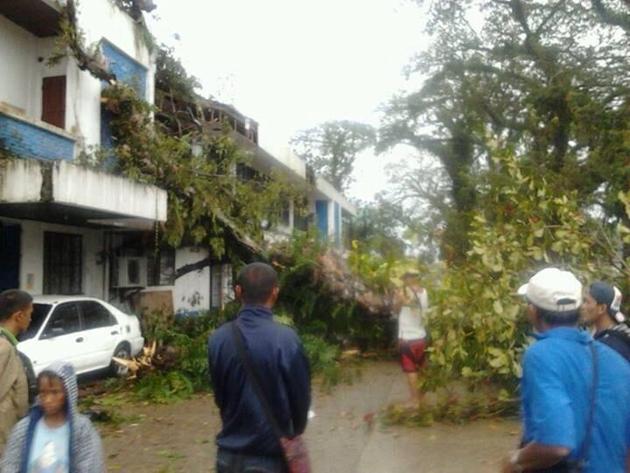
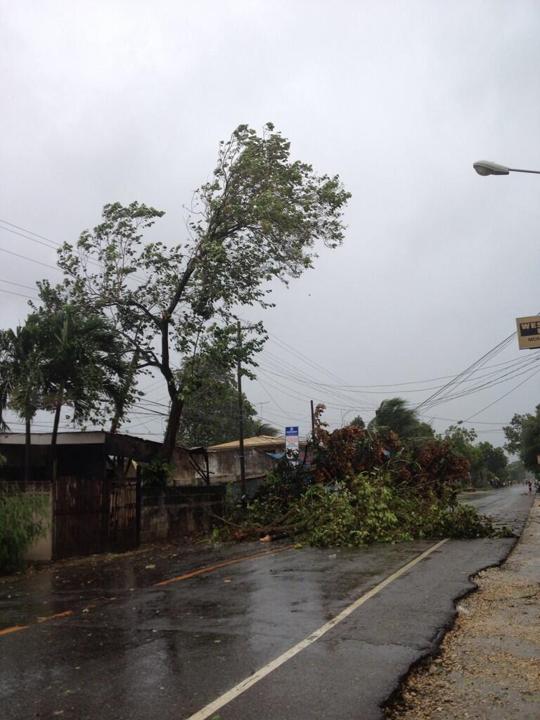
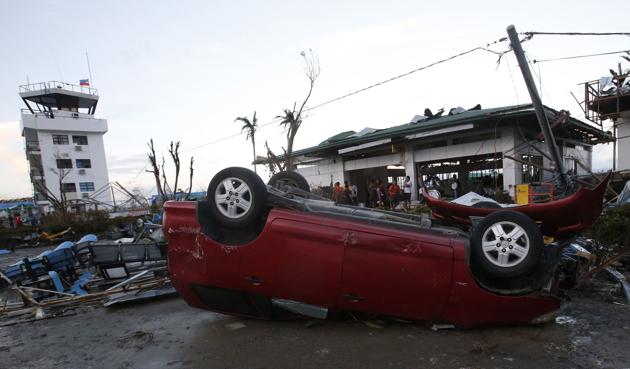
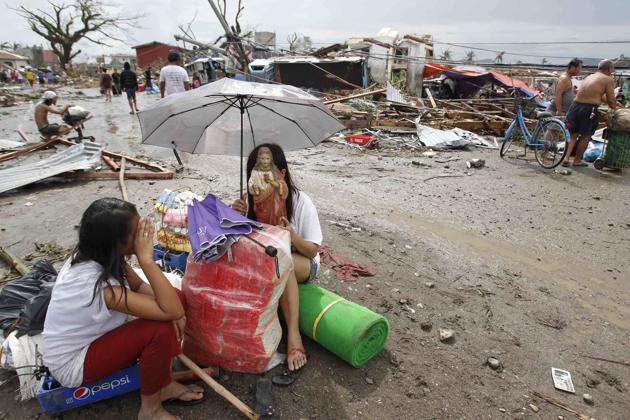
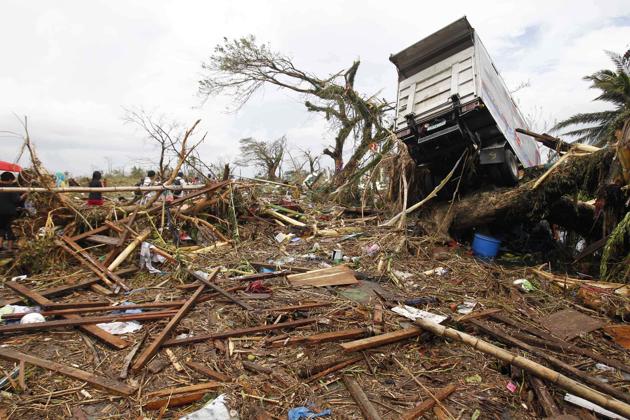
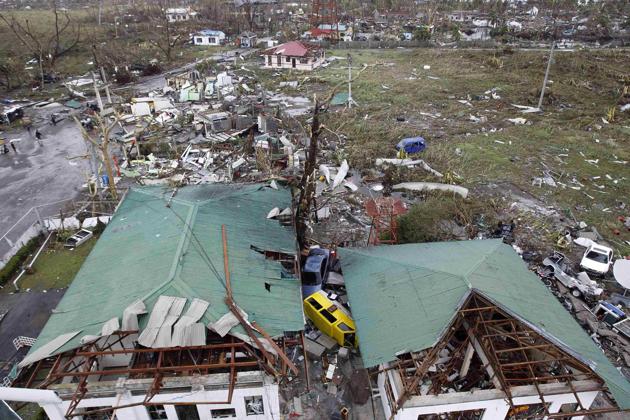
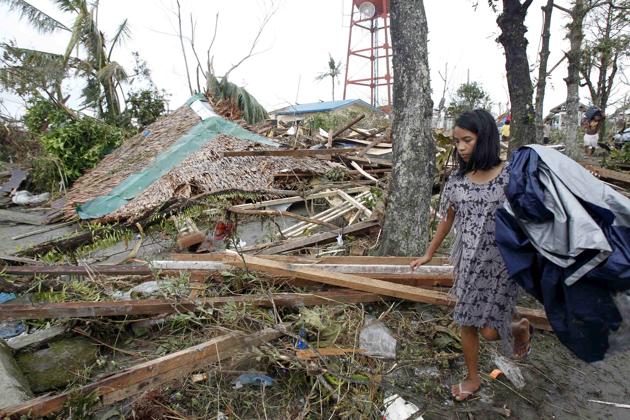
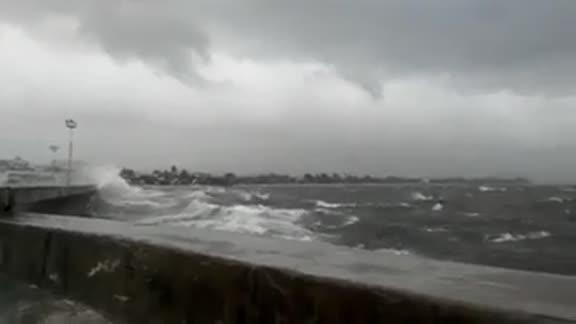
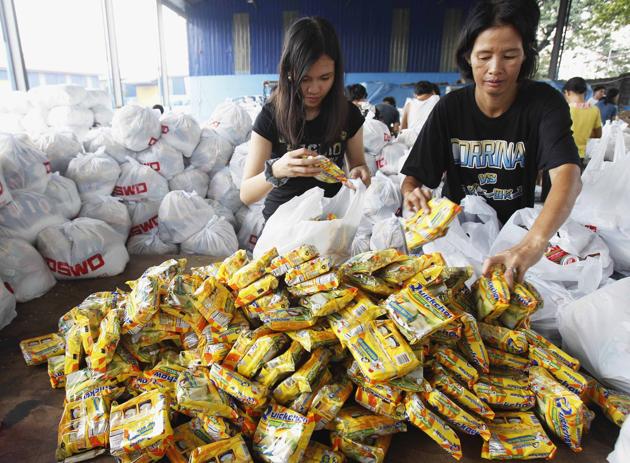
the first help
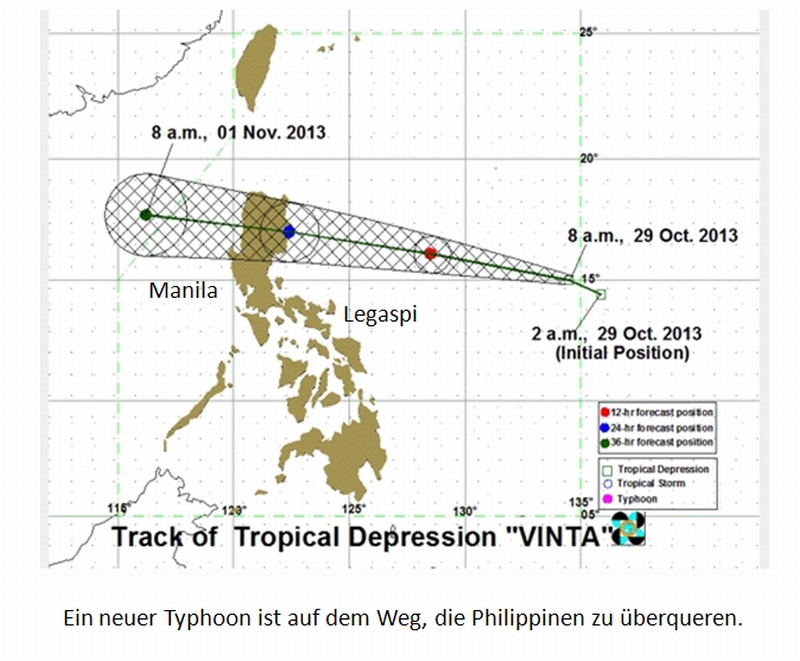
EARTHQUAKE
in the Philippines, Bohol, 15.10.2013
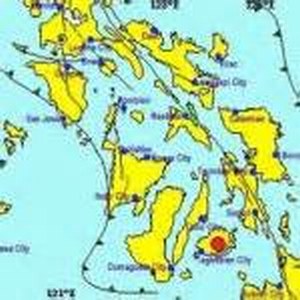
18.10.2013,
By Erik De Castro
LOBOC, Philippines (Reuters) - The Philippines started to clear roads
blocked by debris on Thursday as it reckoned up the cost of this week's
powerful earthquake, with the death toll rising to at least 158.
Tens of thousands of residents of Bohol island, which took the brunt of
Tuesday's 7.2 magnitude quake, remained living outdoors, for fear of
aftershocks bringing down damaged homes.
Authorities have recorded more than 1,200 aftershocks including one
of magnitude 5.5.
Nearly 17,000 people have yet to return home in the town of Loboc,
where
the island's second oldest church, the Church of St Peter, was
pulverised
in the quake.
"All of them left their houses because of the strong aftershocks," said
Mayor Helen Alaba, who said she had sent out teams of engineers to
check
if homes were safe.
The national disaster agency said at least 146 of the dead were on
Bohol,
630 km (390 miles) south of the capital, Manila. There were 11 deaths
on
the nearby Cebu islands and another on Siguijor island.
The number of injured reached 374, with at least 22 people missing. The
government has declared a state of calamity in Cebu and Bohol, where
more
than 3.4 million people were affected by the quake. Schools remain
closed.
br>
The quake caused big landslides and wrecked more than 130 schools and
2,000 houses, completely destroying some, besides damaging 34 bridges
and nine main roads.
Engineers say at least three bridges in Bohol are structurally unsound
and need to be replaced, the public works official said.
"To make these roads passable at the soonest, they will need millions
here, to the tune of about 700 million pesos," said Bohol governor
Edgardo Chatto. "We're not talking of replacements yet."
The transport department estimates restoring Bohol's damaged port of
Tagbilaran City would cost about 500 million pesos.
After providing food and shelter to victims, restoration of Bohol's
centuries-old churches, usually thronged by tourists, would top the
government's agenda, Chatto said.
Loboc, whose residents depend mainly on tourism for their livelihoods,
will need several weeks to recover before it can resume such tourist
draws as river cruises and sightings of the world's smallest primate,
the tarsier, a tourism official said.
Some visitors to Bohol have cancelled reservations, but some hotel
operators expect tourist visits to resume soon.
(Additional reporting by Rosemarie Francisco in Manila;
Editing by Clarence Fernandez)
20.10.2013
The death toll from a killer quake in the central Philippines is likely
to approach 200 as rescue teams focused on finding dead bodies buried
under landslides and fallen structures, an official said Sunday.
A total of 185 deaths have been confirmed so far from the 7.1 quake
that shook the tourist island of Bohol on Tuesday, toppling bridges,
shattering roads, causing landslides and reducing historic churches to
rubble.
Bohol suffered 172 dead alone with over 120 dead from falling
structures, said Augusto Escopia, the island's information officer.
"Our conservative estimate is that there are roughly 180 to 185 dead in
Bohol alone," he told AFP, a day after authorities halted the search
for survivors and focused on recovering dead bodies.
The quake also left 13 others dead in the central islands of Cebu and
Siquijor, the National Disaster Risk Reduction and Management Council
said.
The recovery of bodies in Bohol will likely last one more week, said
Escopia, adding that reports from some hospitals indicated that there
were further fatalities to be counted.
There are also nine more missing in Bohol, he added amid fading hopes
they would be found alive.
The biggest problem facing the more than 1.2 million residents of Bohol
island is the need for shelter after the quake destroyed or damaged
many homes, he added.
"They (the residents) are afraid to go home because there are still
aftershocks. Some have cracks on their walls. They are still afraid to
go inside," Escopia said.
About 600 kilometres (370 miles) from capital Manila, Bohol is known
for its beaches, its rolling "Chocolate Hills", tiny tarsier primates,
and centuries-old Catholic churches, many of which collapsed or
sustained heavy damage.
Thousands of people in Bohol have taken to camping out in the open in
front of damaged houses and buildings to avoid being crushed in case
their buildings collapse further, Escopia said.
Both the government and foreign aid groups have been sending in tents
to help residents, he added.
More than 370,000 people were displaced while more than 36,000 houses
have been damaged in Bohol due to the quake, the National Disaster Risk
Reduction and Management council said in a statement.
The Philippines lies on the so-called Ring of Fire, a vast Pacific
Ocean region where many of Earth's earthquakes and volcanic eruptions
occur.
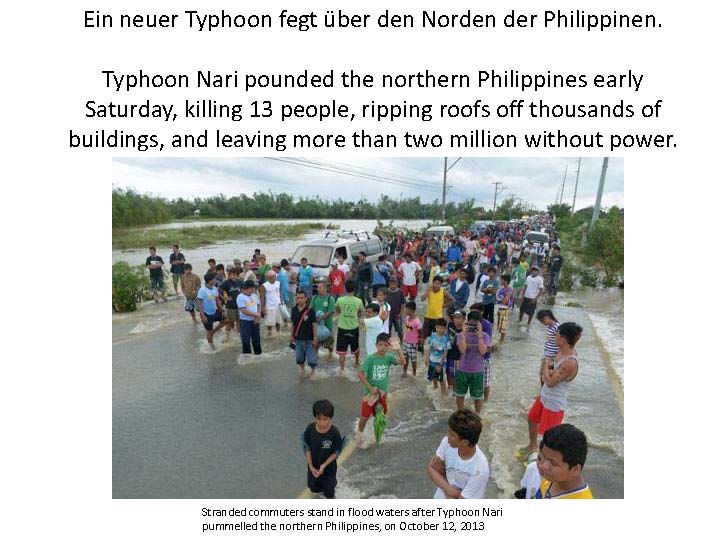
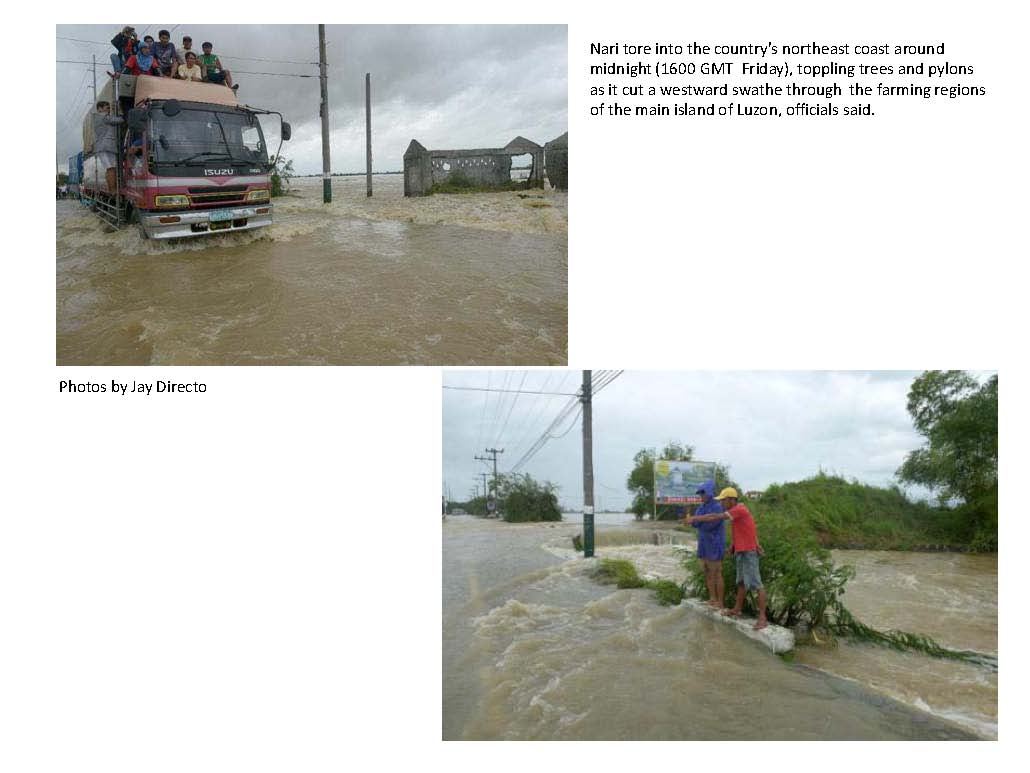
Ein
Taifun wird wahrscheinlich Batanes im Norden der Philippinen
überqueren, siehe Bild.
Die Hauptstadt Manila ist markiert. Unser Partnerkirchenkreis liegt
noch 600 km südlicher.
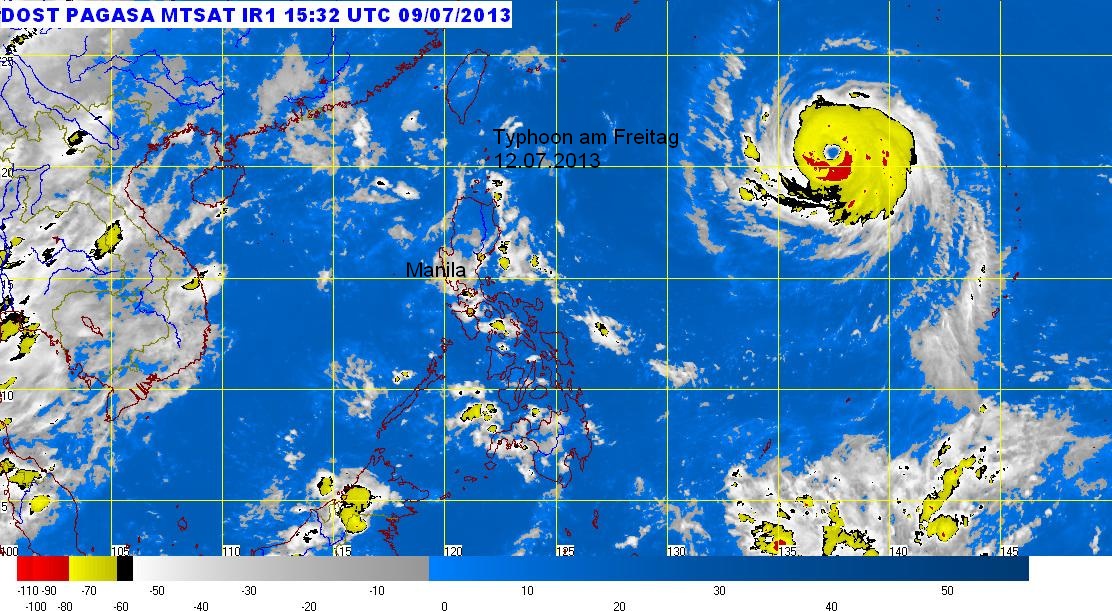
Ein
Taifun wird die Philippinen wieder überqueren, siehe Bild.
Unser Partnerkirchenkreis, Bicol, ist markiert.
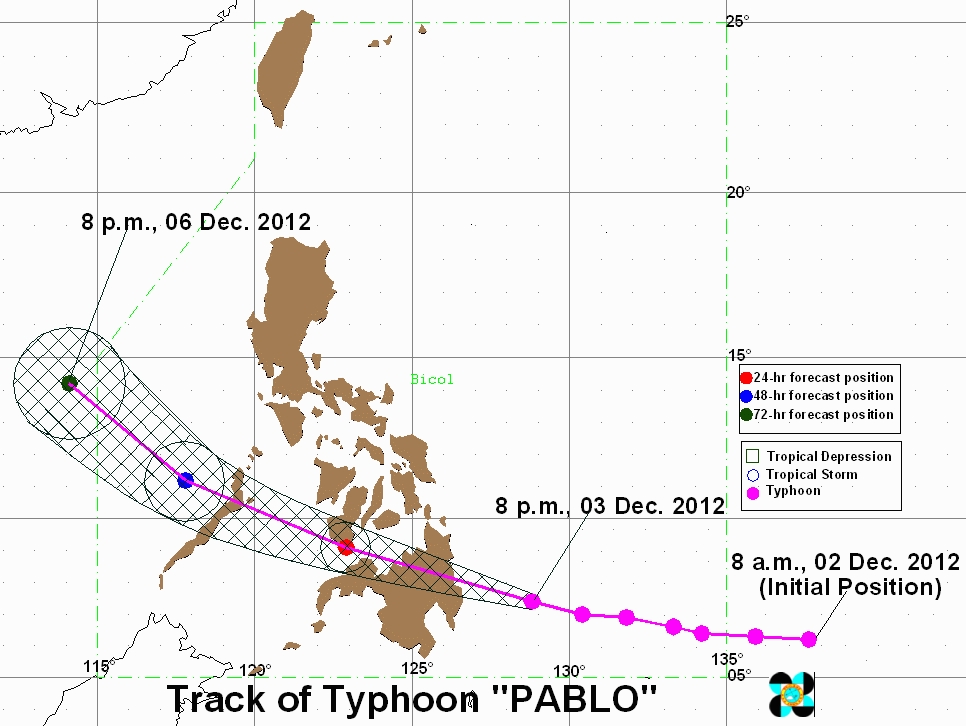
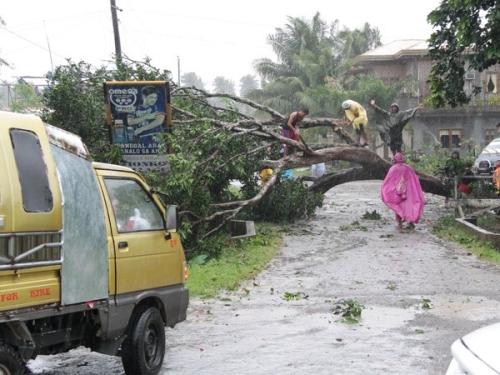
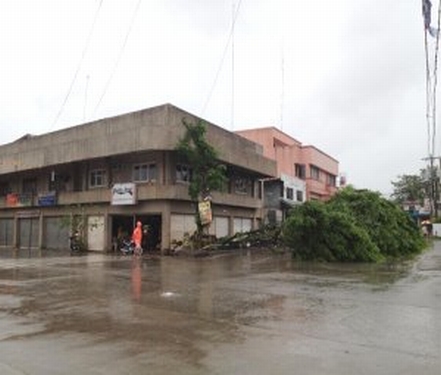
At
least more than 700 have been reported dead in Davao Oriental and
Compostela Valley provinces,
the two areas that were directly hit by typhoon
“Pablo” (international name: Bopha).
As of 5:30 p.m., 151 casualties have been recorded in Compostela Valley
and 116 in Davao Oriental,
Lt. Col. Lyndon Paniza of the Army 10th infantry division said in a
radio interview.
inquire.net
Ein
Seebeben 150 km vor der Küste der Philippinen mit der
Stärke 7.3
könnte
ein Tsunami ausgelöst haben und auf die Insel Samar
treffen.
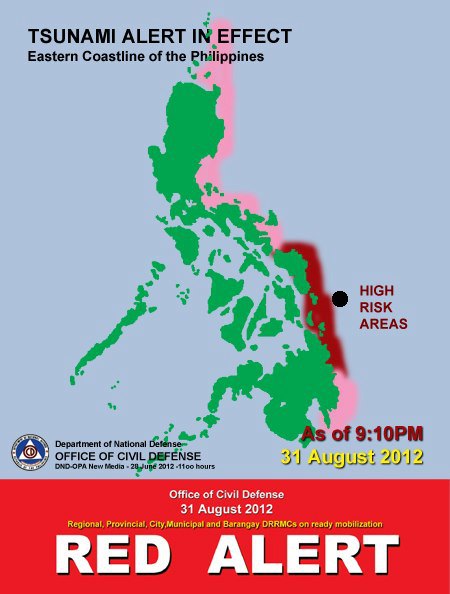
Deutsche Zeit 15:10
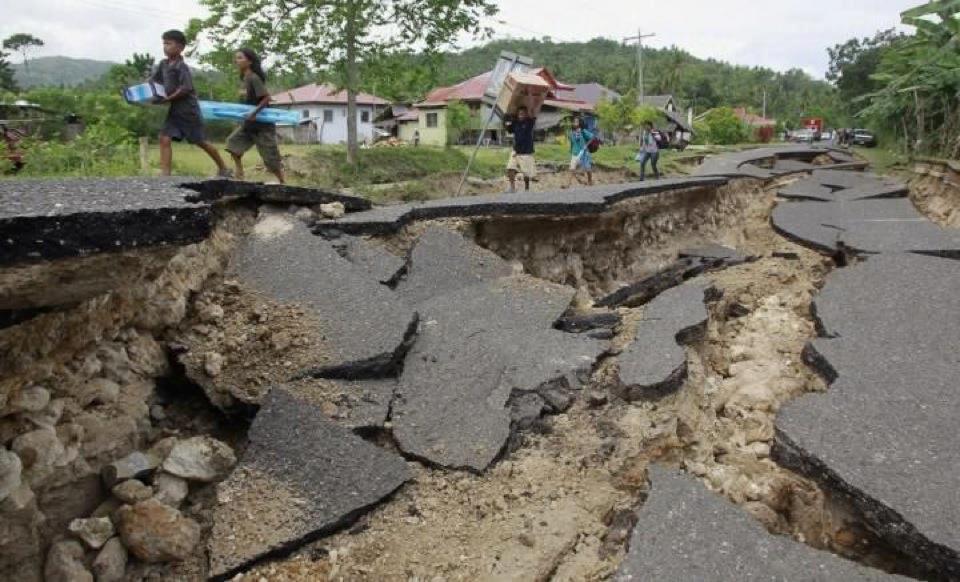
Erdbeben
in Samar - earthquake in East of Sulangan, Eastern Samar
Heute
am 1. Weihnachtsfeiertag wurden aus aktuellem Anlaß in der
Kollekte des Gottesdienstes
200 Euro gesammelt. Das
Geld geht an die Flutopfer des Typhoons "Sendong",
der am 16. + 17. Dezember über
die Insel Mindanao auf den Philippinen fegte
und mehr als 1200 Todesopfer forderte. Weihnachten 2011
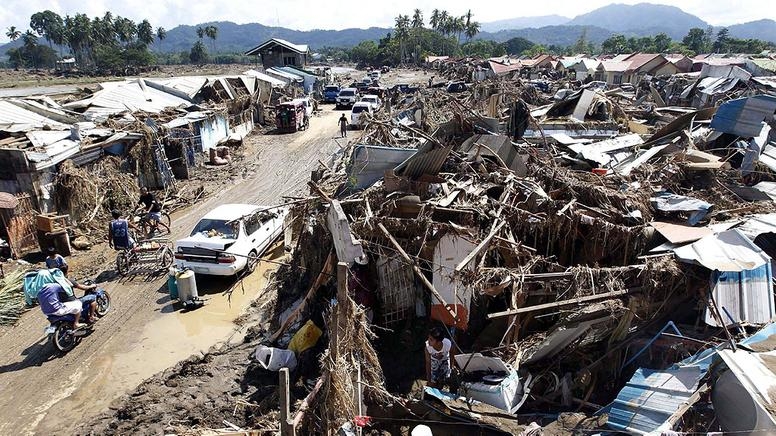
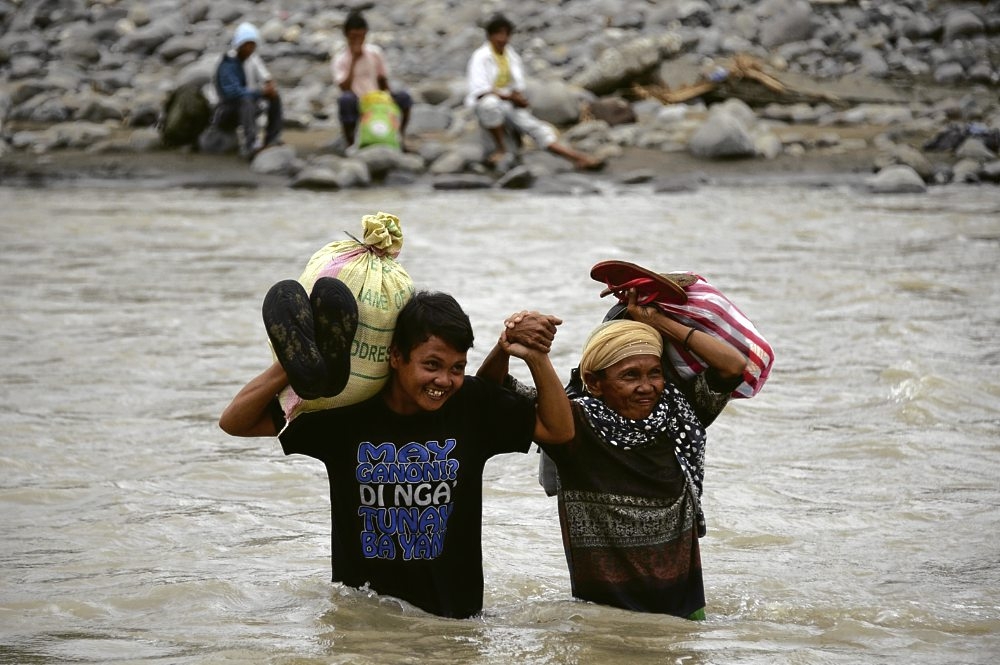
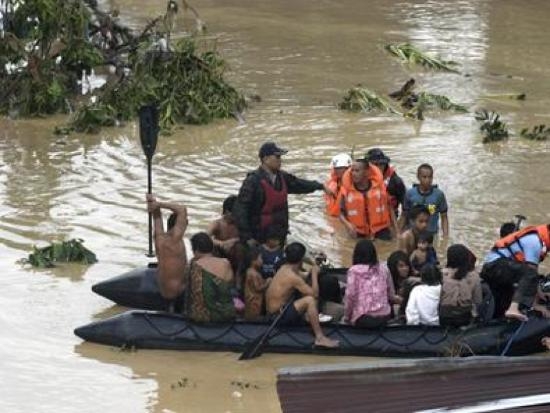
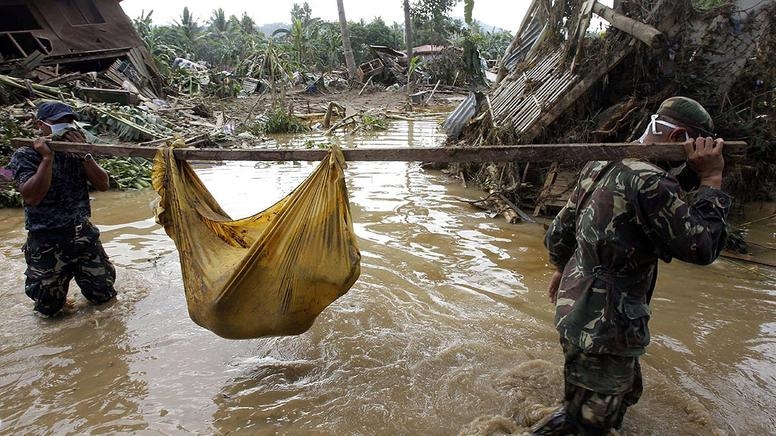
26.Juli 2011,
Typhoon Juaning überflutet unseren Partnerkirchenkreis Bicol
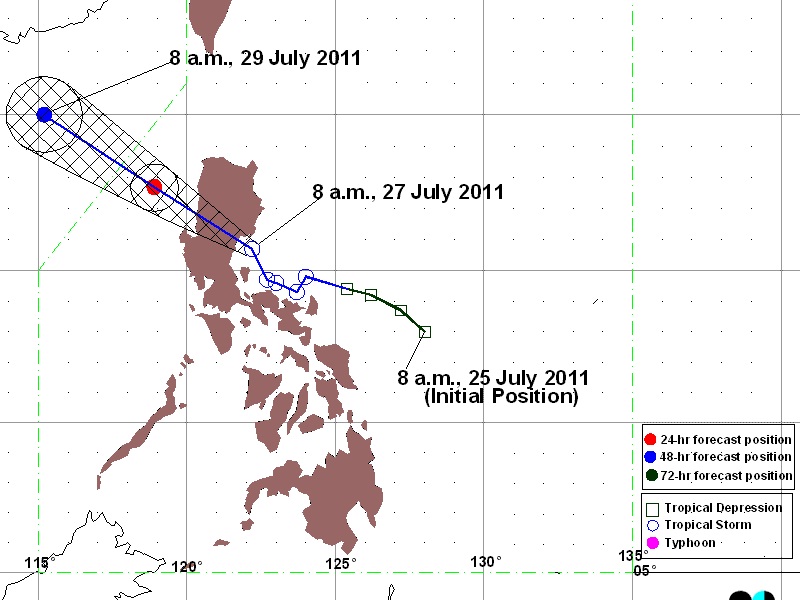
Der heftige Regen kam in der Nacht zum 27. Juli
völlig überraschend und überflutete weite
Teile. Myra aus der Jugengruppe 2006 hat es hart getroffen. Viele ihre
Haushaltsgegenstände sing unter Wasser und nicht mehr zu
gebrauchen. Brücken sind zerstört und sie kann nicht
in die Stadt Polangui zum Einkaufen kommen.
05.November 2010,
Erdbeben und danach Vulkanausbruch des Bulusan in Irosin, Sorsogon
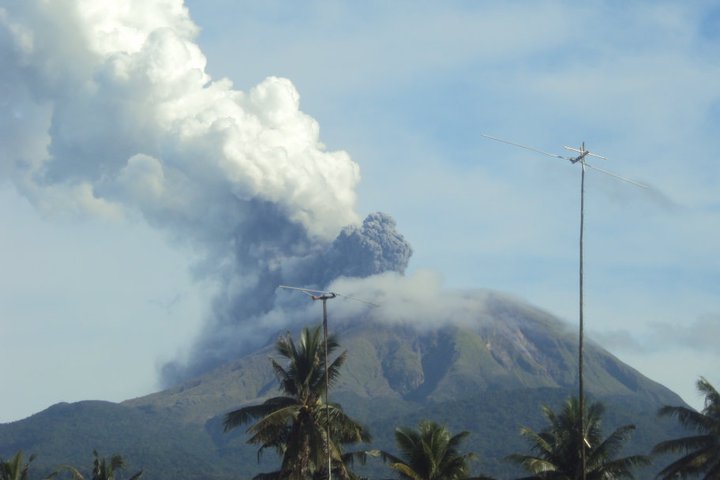
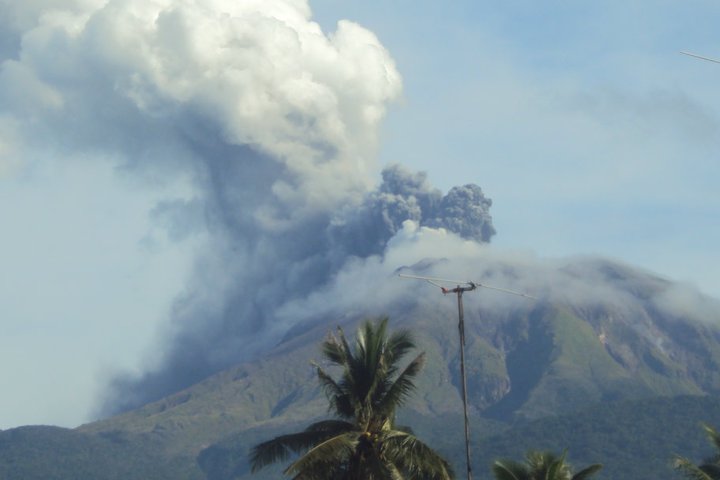
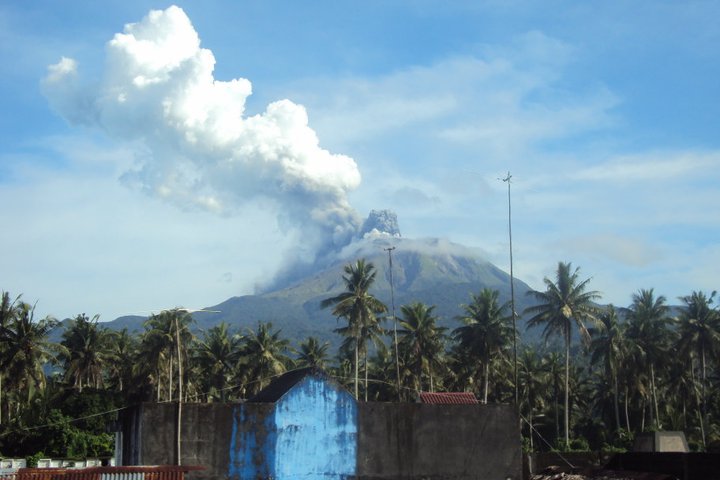
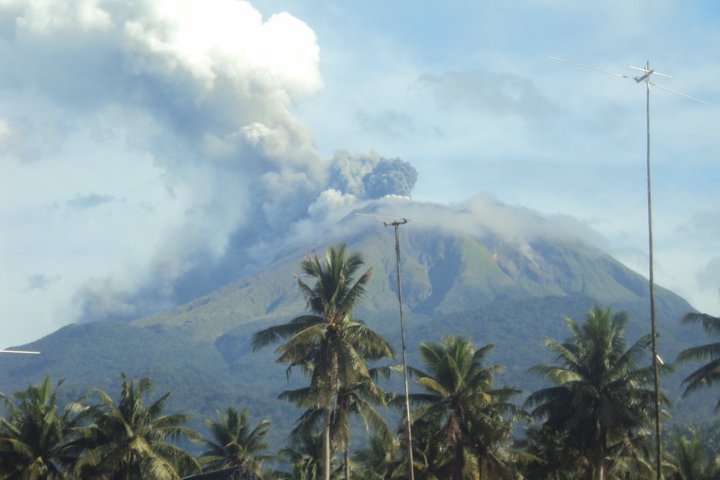
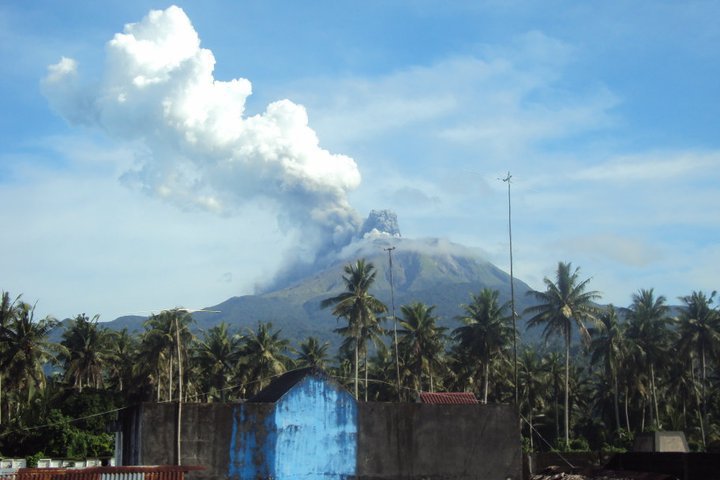
Bilder von Grace und Maria
Es gab zum Glück keine Verletzte und
Tote. Der Vulkan blies nur Asche in den Himmel.
18.Oktober 2010,
der Typhoon “Juan” fegt mit über 250 km/h
über den Norden der Philippinen
und forderte 10 Menschenleben. Danach nimmt er Kurs auf Hong Kong.
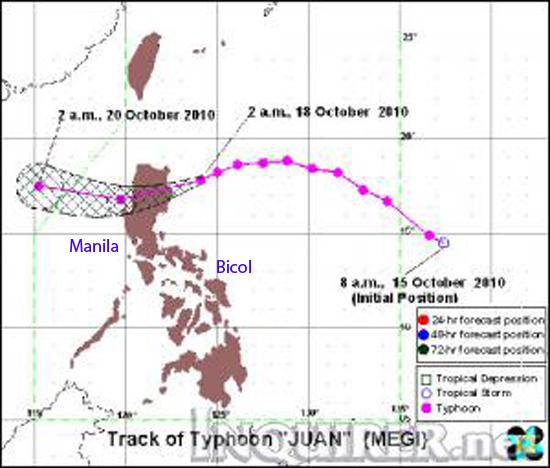
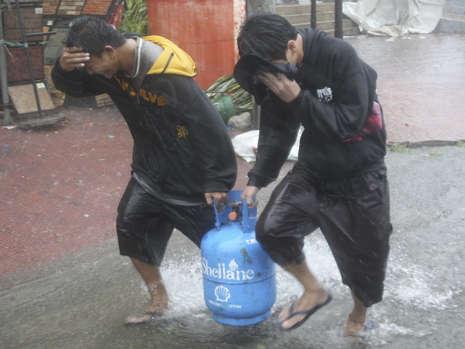
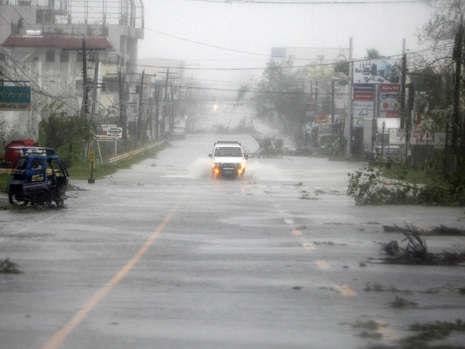
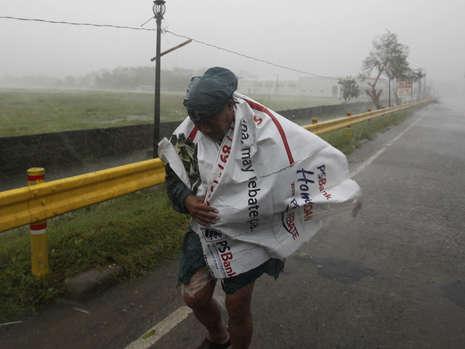
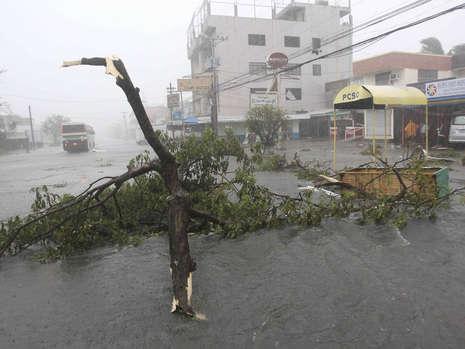
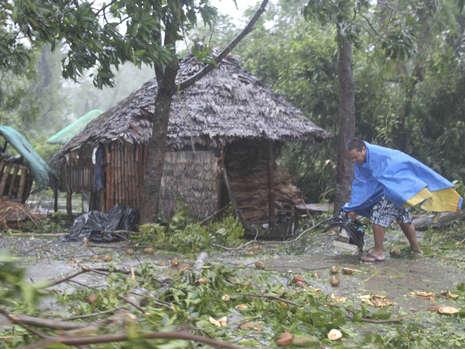
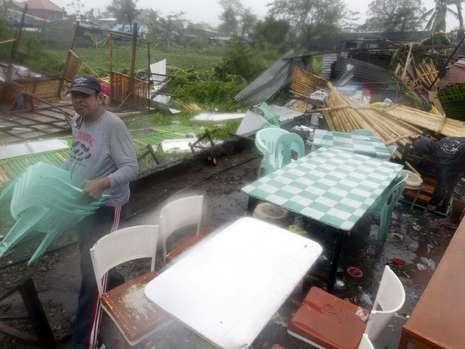
19.Oktober 2010,
der Typhoon “Juan” wird durch die Wetterlage in
China zum
Umdrehen gezwungen und er nimmt erneut Kurs aud den Norden der
Philippinen.
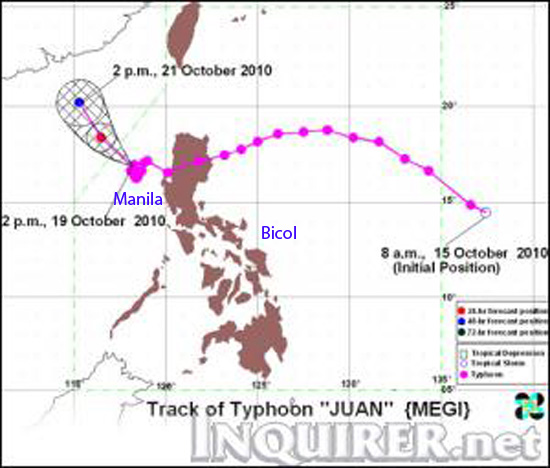
13.Juli 2010, der
erste Typhoon “Basyang” auf den Philippinen
forderte 38 Menschenleben.
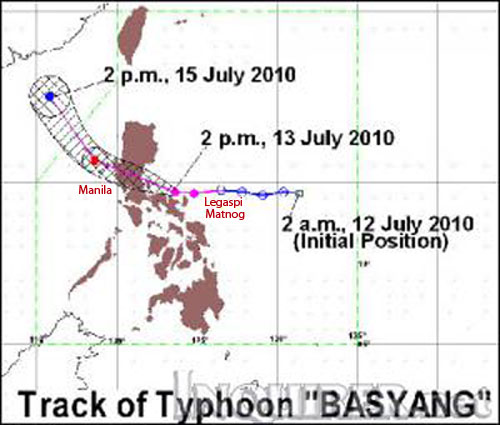
(July 13, 2010 07:01), der erste Typhoon
"BASYANG" fegt über Manila
Philippine Daily Inquirer
First Posted 08:26:00 07/13/2010
MANILA, Philippines— (UPDATE 4) “Basyang”
(international name: Conson)
weakened as it made landfall over northern Quezon Tuesday night but
storm
signal number 2 was raised over Metro Manila.
In its 11:00 p.m. weather update, the Philippine Atmospheric,
Geophysical
and Astronomical Services Administration (PAGASA) said Basyang,
previously
a typhoon, is now a tropical storm packing maximum sustained winds of
95
kilometers per hour near the center and with gustiness of up to 120
kilometers per hour.
The center of storm was spotted near Infanta, Quezon. The weather
disturbance
is still moving west at 22 kilometers per hour and is expected to cross
Central Luzon during the rest of the night.
The eastern section of Central and Southern Luzon will experience
stormy
weather with rough to very rough seas. The rest of Luzon will have
rains
and gusty winds. Visayas and Mindanao will be mostly cloudy with
scattered
rain showers and thunderstorms.
By Wednesday evening, Basyang is expected to leave land on its way out
into
the South China Sea.
PAGASA raised storm signal number 2 over Metro Manila, Camarines Norte,
northern Quezon, Rizal, Aurora, Nueva Ecija, Cavite, Lubang Island,
Laguna,
Batangas, Bataan, Pampanga, Zambales, Tarlac, Pangasinan, and Bulacan.
Storm signal number 1 is up over Catanduanes, Camarines Sur, the rest
of
Quezon, Marinduque, Nueva Vizcaya, Isabela, Ifugao, Benguet and La
Union.
All previous storm warning signals have been lowered.
Resident living in low-lying areas and mountain slopes in areas under
storm
signal number 2 are advised to take all necessary precautions against
flashfloods and landslides. Residents living in coastal areas in these
provinces are also advised to be on alert against big waves.
Seit Anfang
Dezember ist der Vulkan Mayon in unserm Partnerkirchenkreis wieder
tätig.
Am 14. Dezember 2009 wurden die ersten Menschen aus der 6km-Zone
evakuiert.
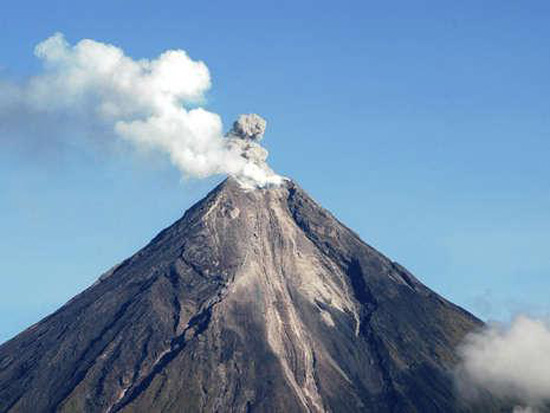
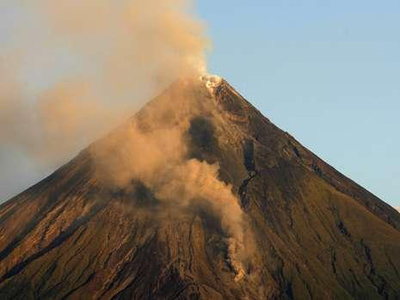

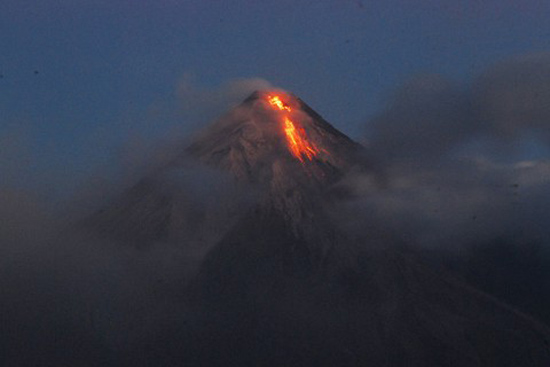
Ein Schauspiel wie die
gefährliche Lava den Berg herunterfließt.
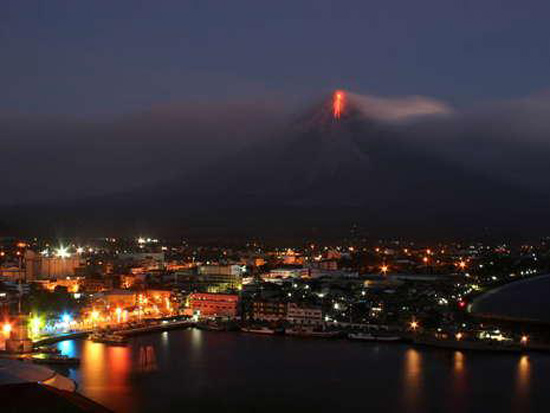
Zur Zeit ist die Stadt Legaspi nicht
gefährdet.
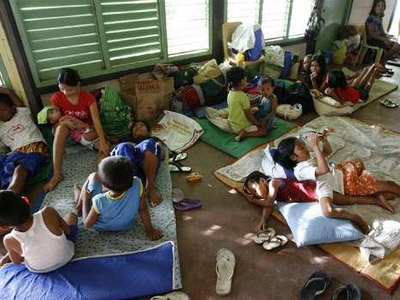
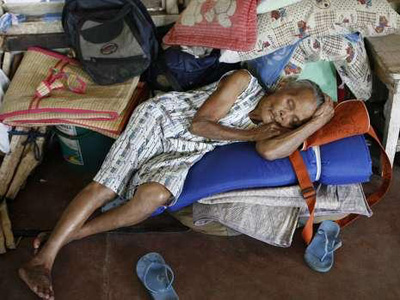
Die evakuierten Menschen in den
Notunterkünften.
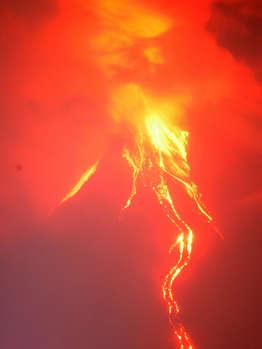
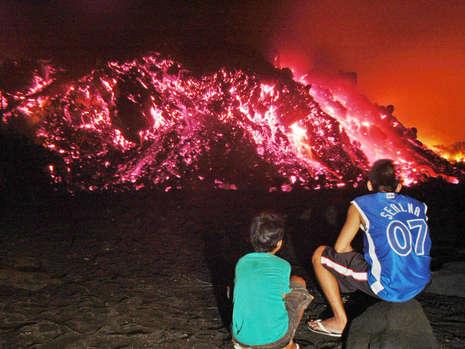
Hier zwei Bilder von früheren
Ausbrüchen.
Phivolcs reports no let up in Mayon eruption
MANILA, Philippines-Showing no let up in its "high
level of activity," Mayon Volcano hissed and rumbled throughout
Christmas Day and on Saturday, ejecting ash columns a kilometer into
the sky, the Philippine Institute of Volcanology and Seismology
(Phivolcs) said.
It said the rumblings continued to be heard at the
Lignon Hill Observatory in Legazpi. A total of 406 earthquakes also
shook the mountain over a 24-hour period and emissions of sulfur
dioxide remained high at 8,993 tons per day.
"Flowing red hot lava and rolling incandescent
lava fragments were continuously observed at Bonga, Padang and Miisi
gullies," Phivolcs said.
Alert Level 4, meaning a hazardous eruption is
possible within days, remains enforced and no one is allowed to venture
within the eight-kilometer danger zone starting from the from the
summit, it said.
"Areas just outside of this (danger zone) should
prepare for evacuation in the event hazardous explosive eruptions
intensify," Phivolcs said.
Der nächste
Typhoon "Santi" ist auf dem Weg zur Hauptstadt der Philippinen.
Er wird am 01.11.2009 erwartet.
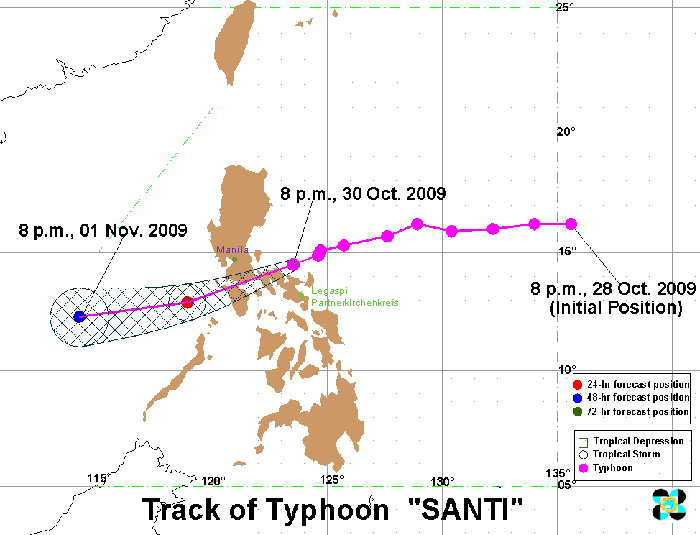
In dem Inselstaat hatten in den vergangenen Wochen
bereits die Stürme „Ketsana“ und
„Parma“
schweres Chaos angerichtet – rund 1000 Menschen starben, mehr
als 160 000 leben seither in Notunterkünften.
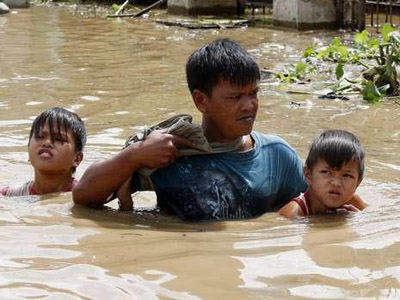
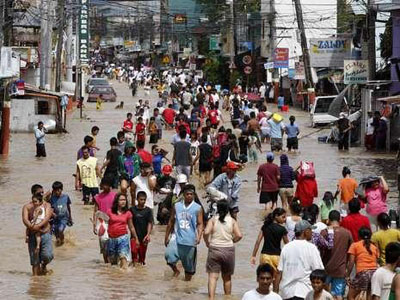
Die bisherige Schreckensbilanz des
erneuten Wirbelsturms "Santi" auf den Philippinen:
Mindestens 14 Tote, 100 000 Menschen auf der Flucht!
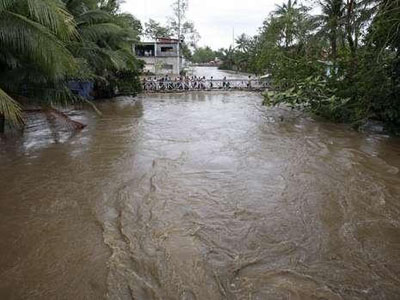
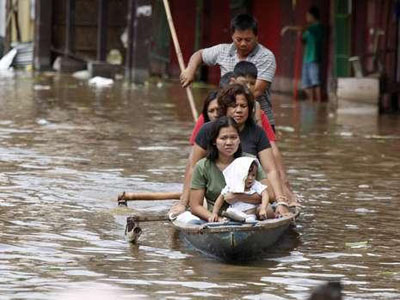
Dramatisch:
„Mirinae“("Santi") löste nach
Behörden-Angaben wahre Blitzfluten aus! Dadurch wurden
sieben Menschen in der Region Bicol (Partnerkirchenkreis)
getötet. Drei weitere Menschen starben in der Provinz Laguna.
Selbst kleine Flüsse entwickeln sich durch die
großen Niederschlagsmengen zu reißenden Fluten.
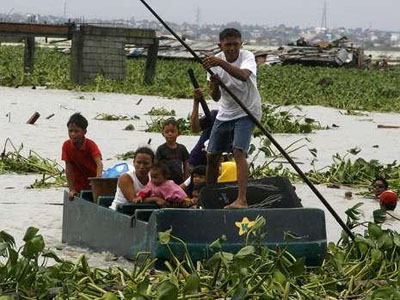
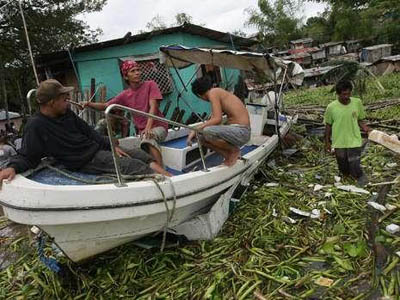
Mit allem, was irgendwie
schwimmfähig ist, bringen sich die Bewohner der Philippinen in
Sicherheit.
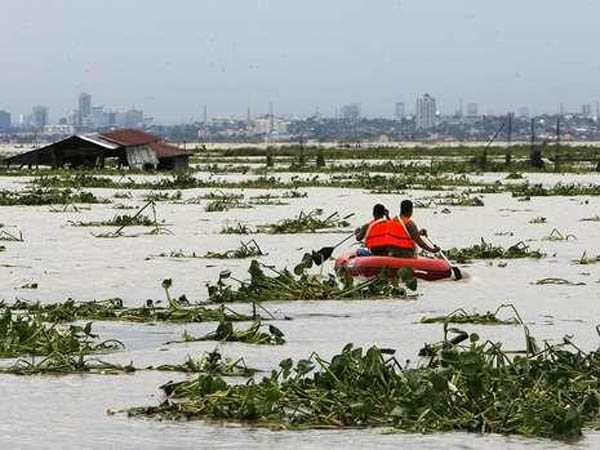
Auf einem Schlauchboot paddeln Helfer zu
einem überfluteten Haus, auf der Suche nach möglichen
Opfern.
Es wird damit gerechnet, dass die dicht
besiedelten Gebiete um Manila noch bis Neujahr unter Wasser stehen.
Der Taifun „Mirinae“("Santi")
zog mit Windgeschwindigkeiten von bis zu 185 km/h über die
Philippinen hinweg.
Er zerstörte in der Provinz Batangas südlich von
Manila eine Brücke, verursachte Stromausfälle
und führte zu Überschwemmungen.
bild.de und dpa
Der
nächste Typhoon "Ramil" ist auf dem Weg zur Nordspitze der
Philippinen.
Er wird am 25.10.2009 erwartet. Er drehte kurz for der Insel Luzon nach
Norden ab
und richtete kein Unheil an.
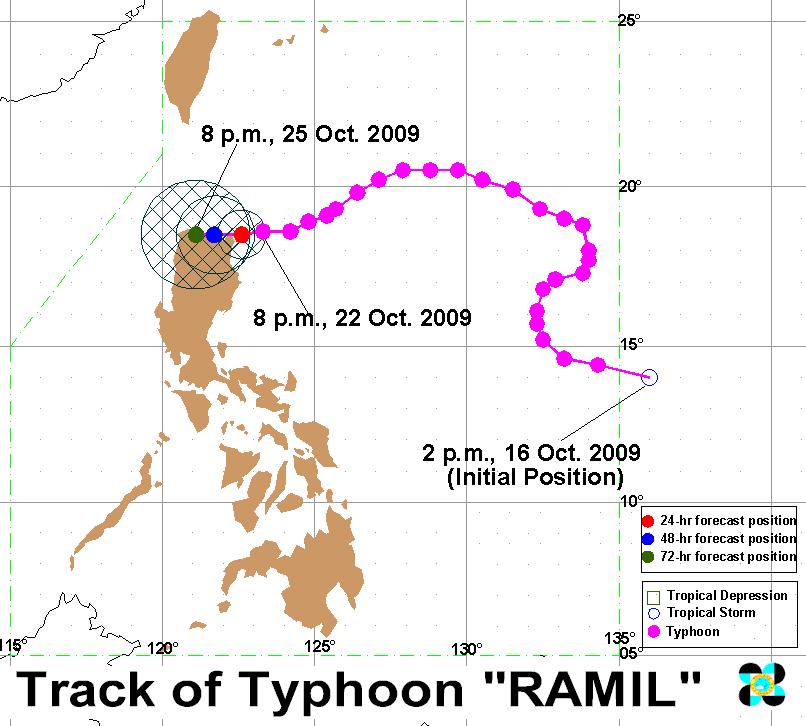
Der
Typhoon "Parma" zog über den Norden der Philippinen nach Japan
und kehrte wieder auf die Philippinen zurück.
Oktober 09, 2009,
Regen Regen Regen
Rund 30 Städte wurden überflutet, als ein Damm nach
tagelangem Regen den Wassermassen
nicht mehr standhielt. „Ostpangasinan ist eineinziger Fluss
geworden“, sagte Vizeprovinzgouverneurin
Marlyn Premicias.
Das Tiefdruckgebiet „Parma“ hält sich seit
Tagen über der Nordostküste. Es ist bereits
das zweite schwere Unwetter, das die Philippinen binnen zwei Wochen
heimsucht. Wirbelsturm „Ketsana“
hatte Ende September in der Hauptstadt Manila die schwersten
Überflutungen seit mehr als vier Jahrzehnten
ausgelöst.
Mehr als 300 Menschen kamen bereits bis zum Freitag ums Leben.
Es starben in den beiden Typhoonen ca 800 Menschen.
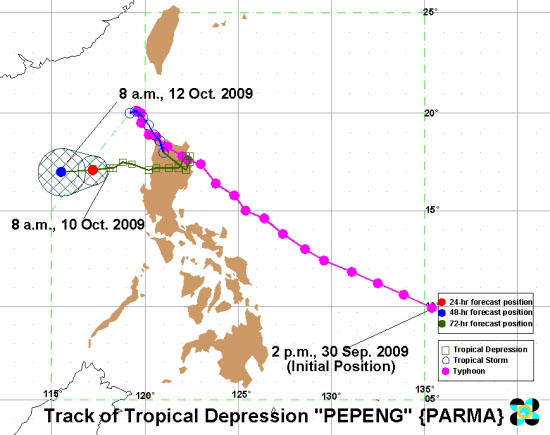
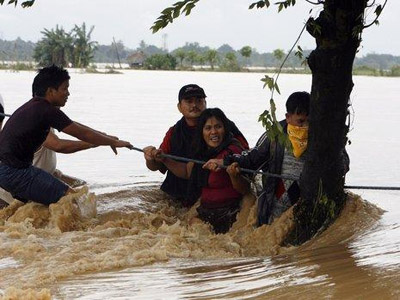
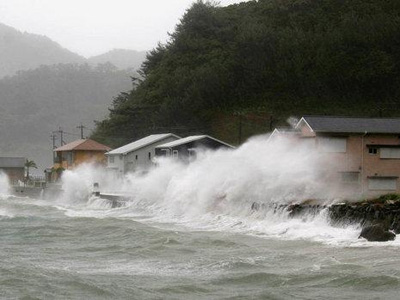
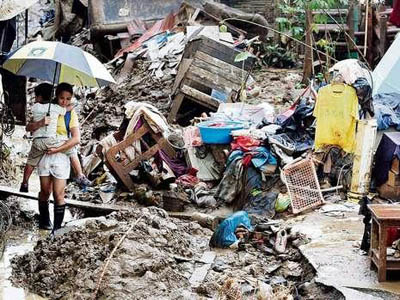
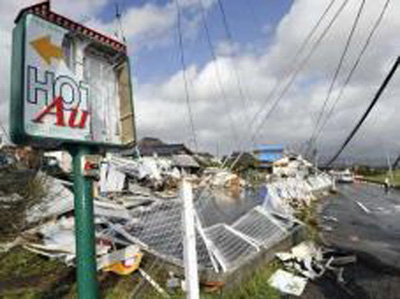
160 Tote bei Erdrutschen auf Philippinen.
Marikina, im Osten der philippinischen Hauptstadt Manila:
Eine Frau trägt nach schweren Regenfällen ihr Kind
durch den knöchelhohen Matsch.
Tropensturm
"Ketsana" auf den Philippinen im Bereich Manila.
September 26, 2009,
es fiel in 9 Stunden soviel Regen wie sonst im ganzen Monat.
In ganz kurzer Zeit stand ein großer Teil der Hauptstadt
unter Wasser.
Es war der schlimmste Sturm seit 40 Jahren.
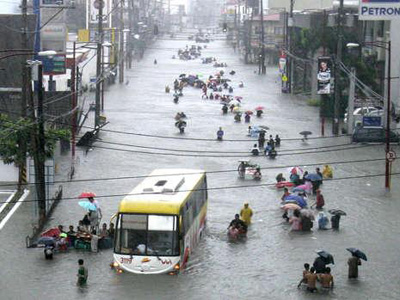 -
-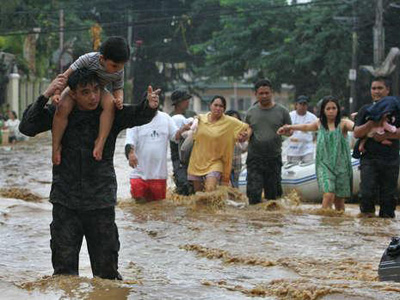
Eine bekannte
Filipina schrieb mir eine sms von einer Verkehrsinsel: ich kann nicht
weiter das Wasser ist zu tief.
Sie erreichte ihre Wohnung auf Umwegen dann sicher etwa 2 Stunden
Später.
Das Auto einer Filipina, die 2006 in unserer Kirchengemeinde war, wurde
geflutet.
 -
-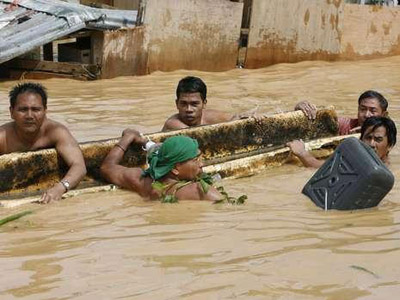
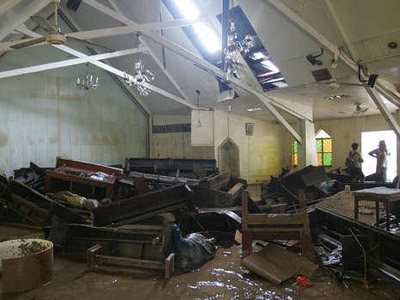 -
-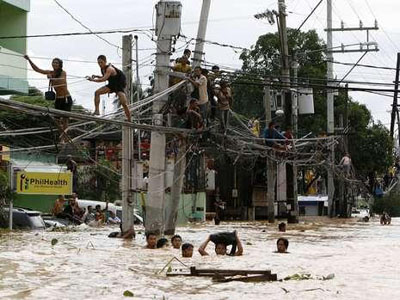
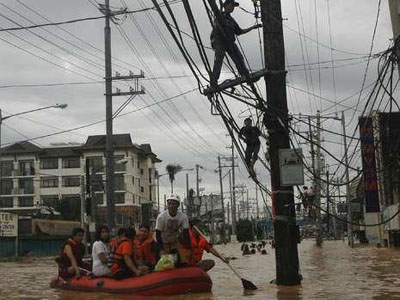 -
-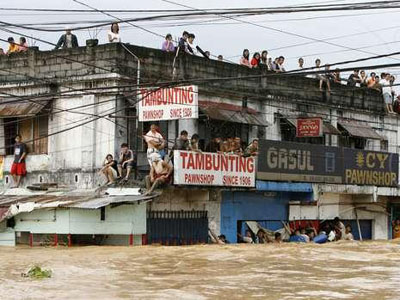
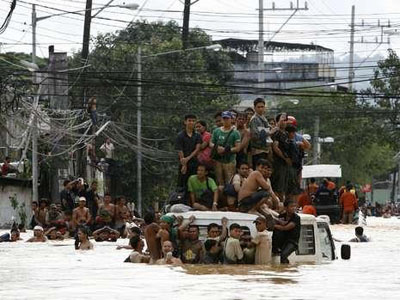 -
-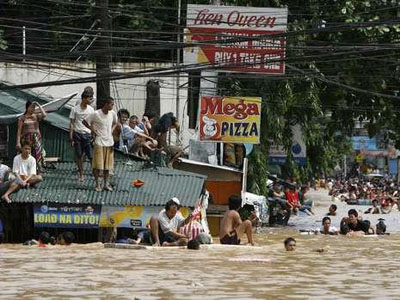
Bilder von bild.de
Alle Bilder aus
Manila. Mein Sohn Nikolas war mit seiner Frau Jane auf dem Weg nach
Manila mit dem Bus,
weil der Flug gestrichen wurde. Sie erreichten die Hauptstadt 2 Stunden
nachdem ein großer Teil des Wassers
wieder abgeflossen war. Das Chaos war riesig. Es gab keine Hotelbetten,
keine Elektrizität, die meisten Geschäfte
waren geschlossen. Es gab kein Geld, weil die Geldautomaten nicht
funktionierten. Auf dem Flugplatz lieferten
Notstromaggregate nur Strom für das Nötigste,
Computer, Telefon and Licht. Die Klimaanlage war aus, es war
heiß.
Der Vater meiner
Schwiegertochter wurde kurz vor dem Ertrinken gerettet. Er war mit
seinem Vetter unterwegs und
wurde von dem Wasser überrascht. Die meisten Einwohner auf den
Philippinen können nicht schwimmen.
Bis jetzt, 3 Tage
nach der Flut, wurden ca 260 Tote gefunden.
weitere Bilder ohne Kommentar, sie sprechen für sich.
weitere
Bilder ohne Kommentar, sie sprechen für sich:
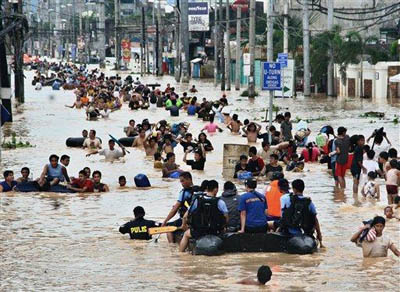 -
-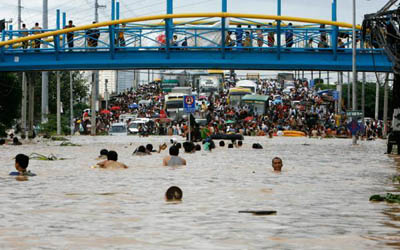
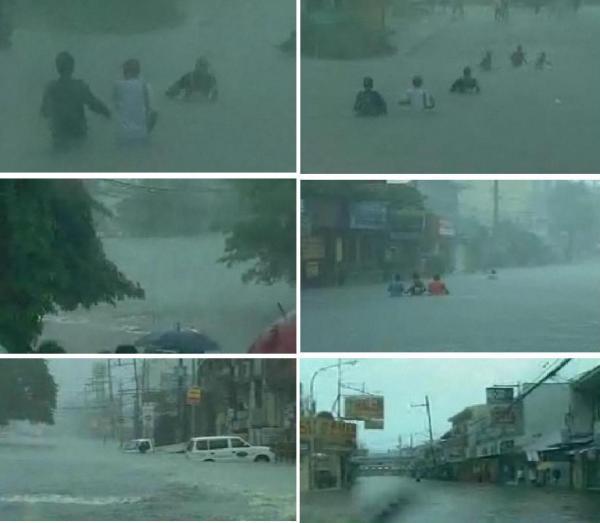
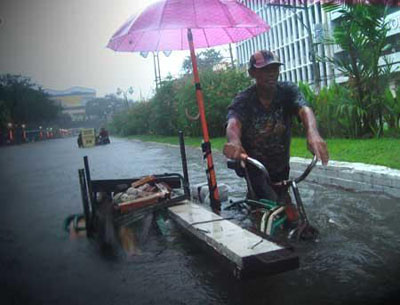 -
-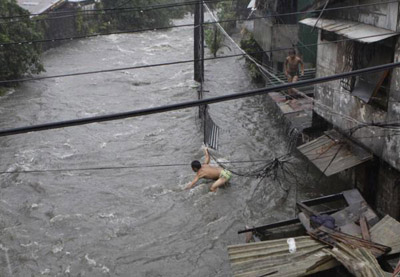
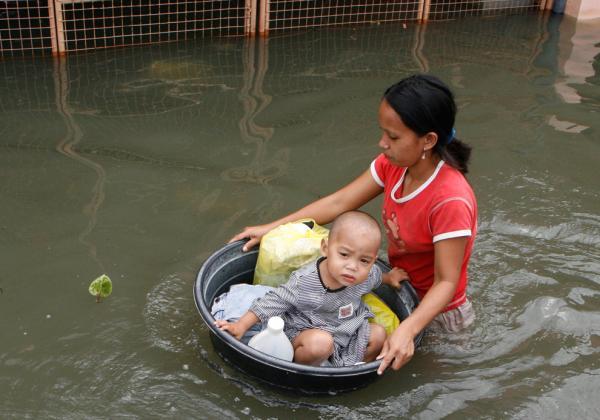
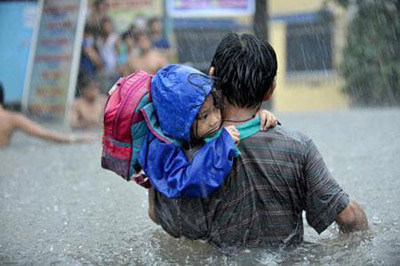 -
-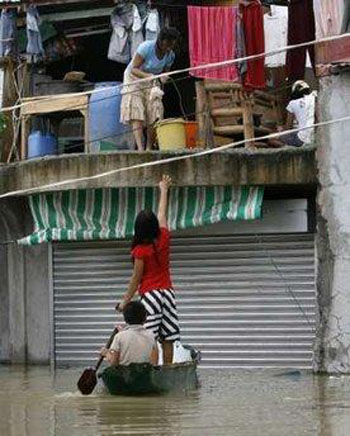
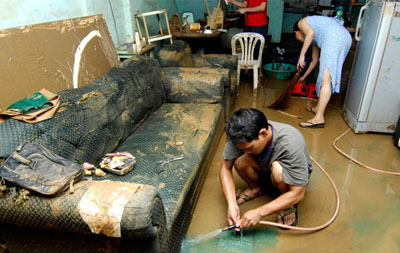 -
-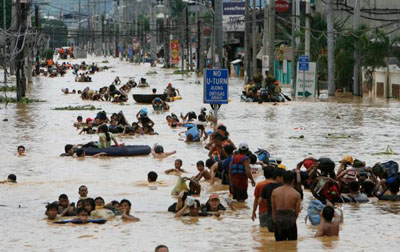
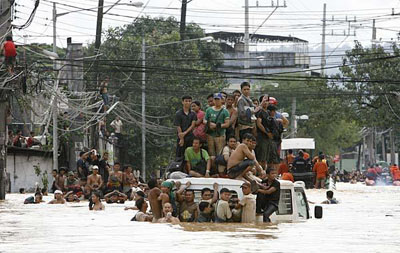 -
-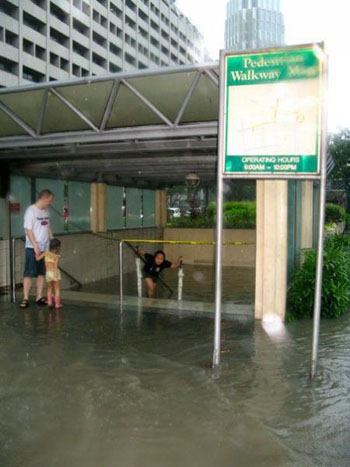
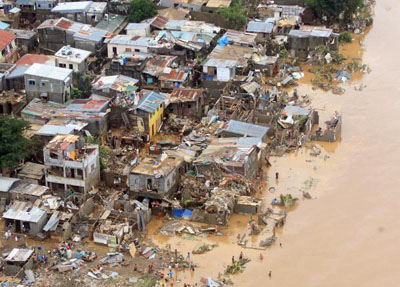 -
-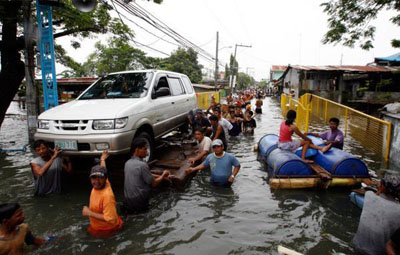
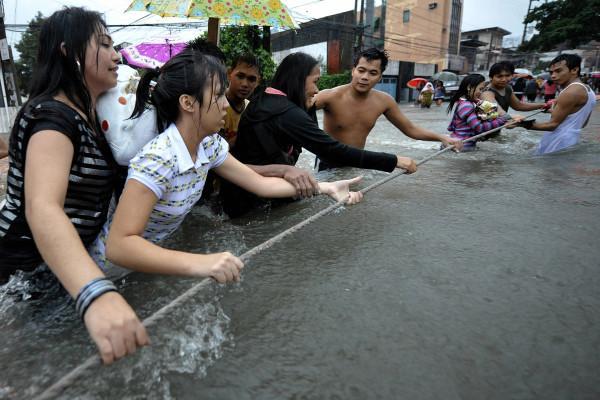
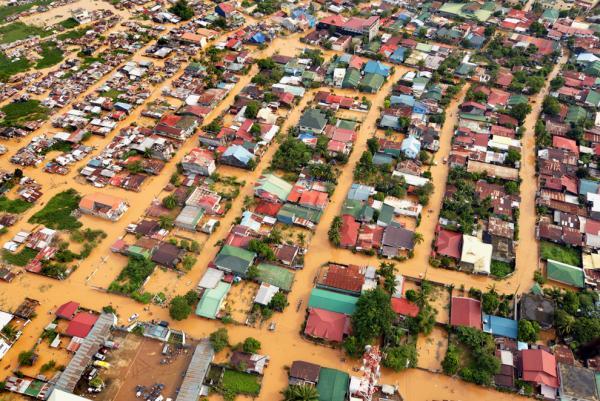
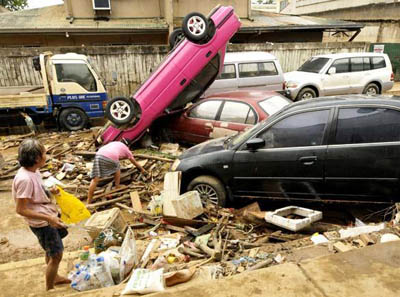 -
-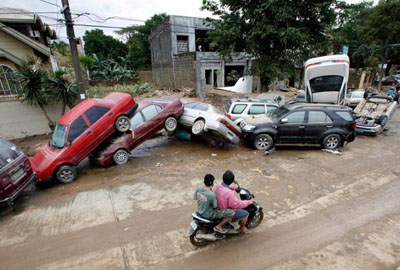
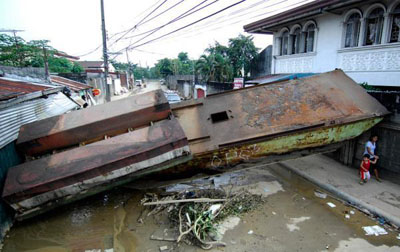 -
-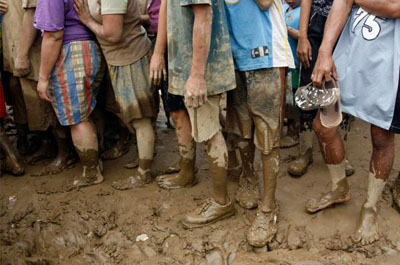
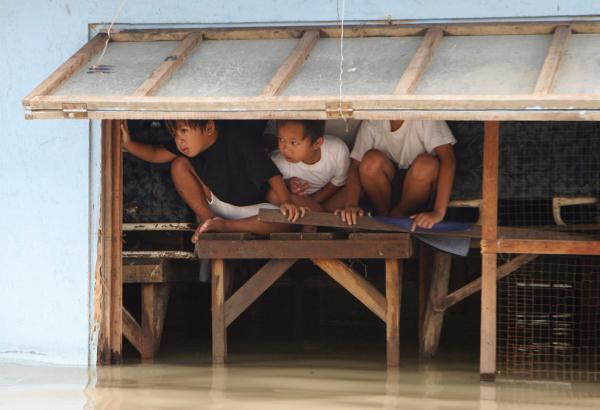
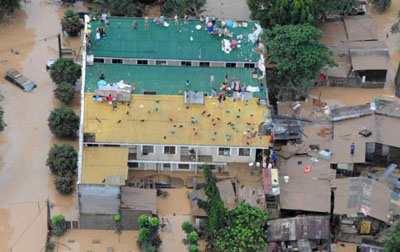 -
-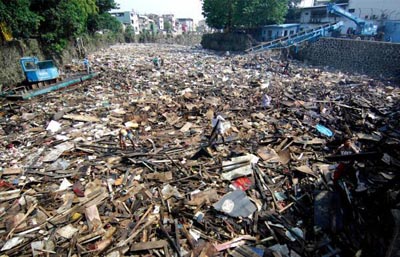
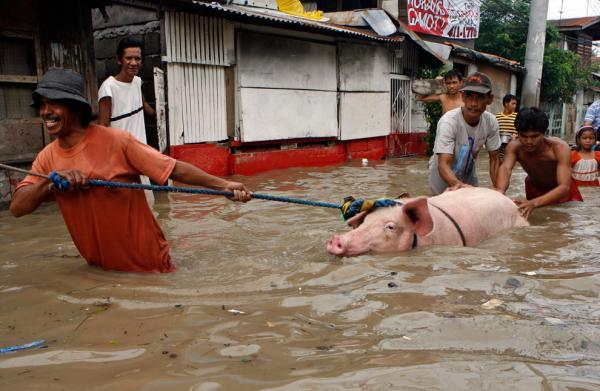
"Das arme Schwein, he3x."
Neues
Unwetter auf den Philippinen im Partnerkirchenkreis
Myra:(February 25,
2008 07:20)
Hello daddy! How are you? Hope that you
are all fine there. For us here, its
2 weeks already with contineous rain. We have already flashfloods and
landslides.
Wilfried:(February
25, 2008 11:55:29)
Dear Myra, salamat Im ok and with good health. We have sun and no rain.
I hope
you are ok. Where was the landslide and flood. Our tv shows in the
south of the
Philippines a great flood. Many greetings your daddy wilfried.
Myra:(February 25,
2008 12:02)
Here in our place we have floods and many houses were destroyed,
landslides
was in Sorsogon part and in Ligao city until now there were heavy rains
almost 24 hours.
Für
den 22.11.2007 11 Uhr hat der Wetterbericht
den Supertaifun "Mitag (Mina)" angekündigt.
Er soll wieder genau unseren Partnerkirchenkreis in Bicol treffen.
Viele Menschen wurden in gefährdeten Gebieten schon evakuiert.
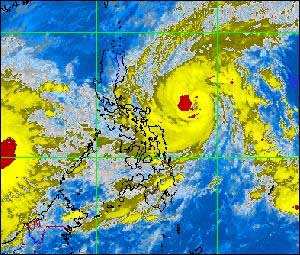
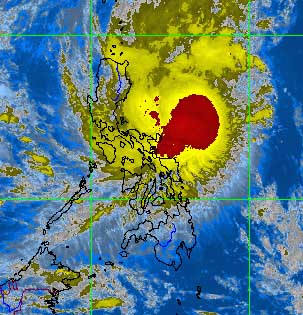
Satellitenbild 23.11. *********** 24.11.
10 Uhr deutscher Zeit
Die Zeitangabe ist
Ortszeit auf den Philippinen, Deutschland -7 Stunden
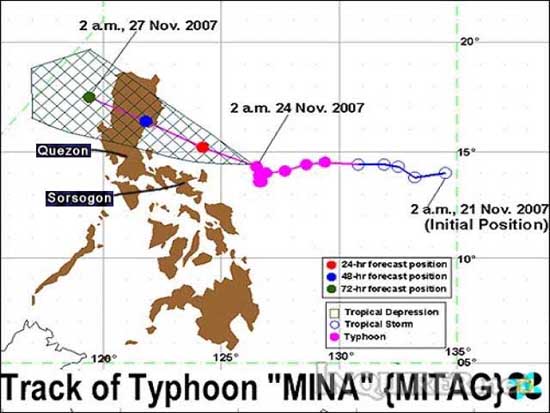
Sorsogon Wohnort von Jane und Kirstens
Eltern und
Teil unseres Partnerkirchenkreises in Bicol
Der Taifun ist ohne
großen Schaden anzurichten im Norden vorbeigezogen.
Daniel, ein
Teilnehmer des Youth Camp 2003 und 2006, flog im Februar/März
in unseren Partnerkirchenkreis auf den Philippinen, um zu helfen.
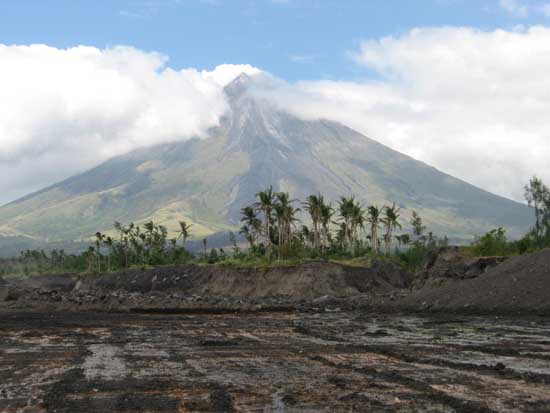
Der Mayon im März 2007, etwa 5
Monate nach den Katastrophen.
Die Spuren des Ausbruchs und Erdrutsches sind noch deutlich zu sehen.
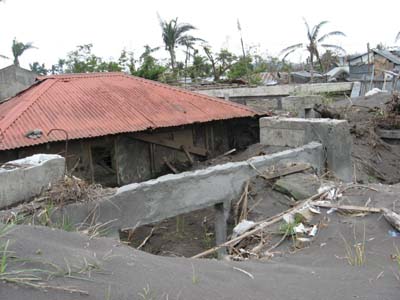
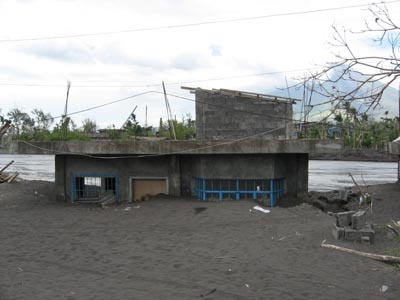
Hier haben Menschen gewohnt. Die
Schlammlawine hat die Häuser zerstört und
verschüttet.
Sie war bis zu 20 m dick und bewegte sich mit 60 km pro Stunde
über das Land.
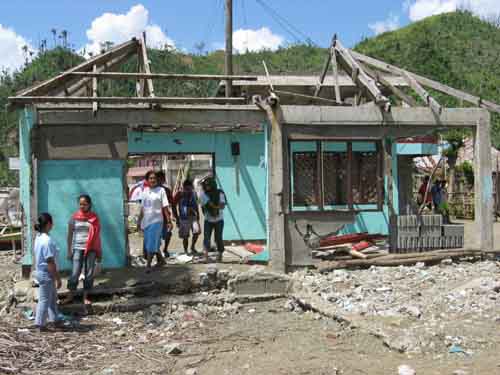
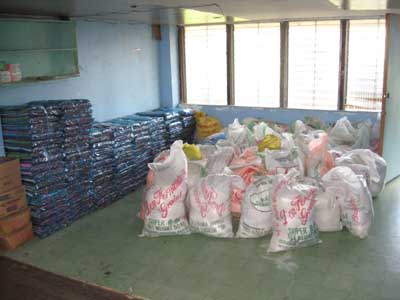
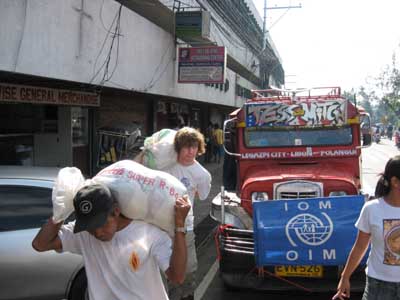
Die Hilfsgüter, Lebensmittel
(Reis u.a.) und Decken, wurden von Daniel
und den Filipinos verladen und an die Menschen verteilt.
08.12.2006 Interview
zum Taifun auf den Philippinen mit Jane, Kirsten, Daniel und Pfarrer
Mustroph
30.11.2006 Erneut
fegt ein Taifun über die Philippinen und über unseren
Partnerkirchenkreis.
Bei Schlammlawinen am Mt. Mayon sterben ca 1000 Menschen.
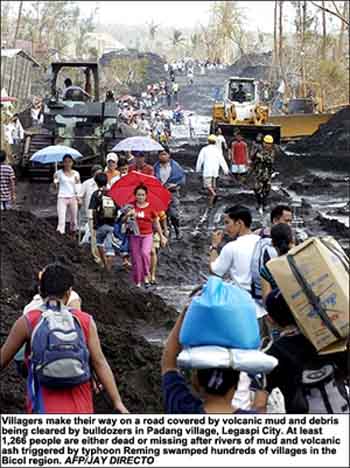
5 Tage danach
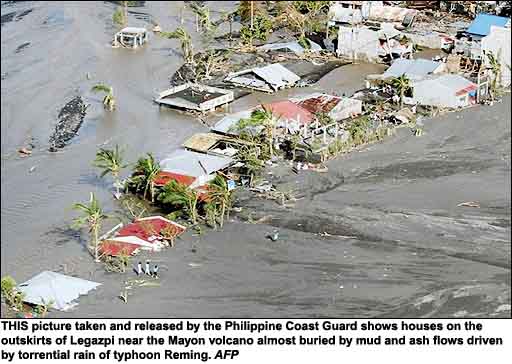
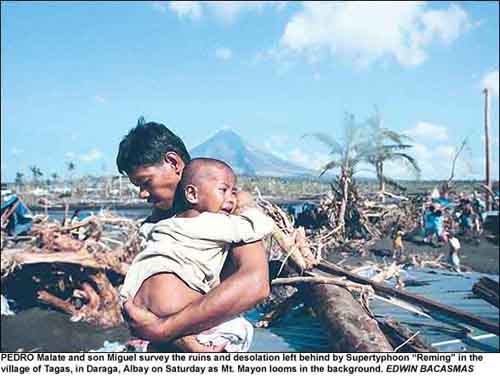
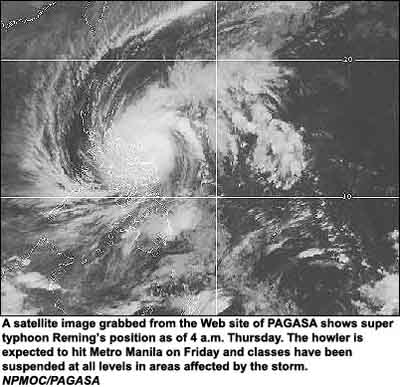
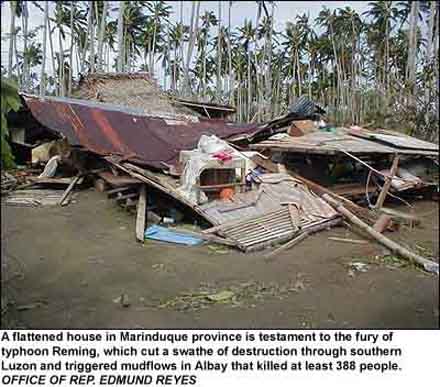
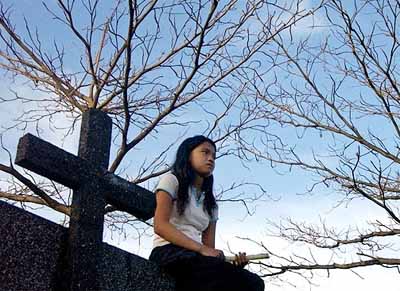
01.11.2006 Eine junge Frau sitzt am Grab
Ihrer Verwandten.
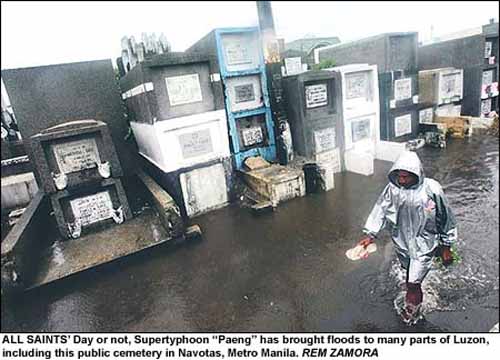
30.10.2006 Der nächste Taifun,
stärker als vor 5 Wochen, fegt über das
nördliche Luzon.
Auch öffentliche Friedhöfe wurden überflutet.
|
Live-Bericht einer Filipina
des Youth-Camp-2006
über den Taifun "Milenyo"
Hi Daddy
Wilfried!
Ich lese gerade deine Nachricht, Entschuldigung ich konnte erst jetzt
antworten, denn sogar das Internet hat hier große
Schwierigkeiten. Ich hoffe,
dass dich diese Nachricht erreicht.
Wir sind in Ordnung durch die Gnade Gottes, es ist kein Dach
weggeflogen, nur
eine Tür an der Seite von unserem Haus, unser Kellergeschoss
war ein bißchen
überschwemmt bis zum Knöchel aber im Grunde sind
meine Familie und
ich in Ordnung, wir danken Gott!
Meine Schwestern kamen zu meinem Geburtstag
drei Tage vor dem Taifun. Es war Sonntag der 24.09., die ganze Familie
(wir
waren vollzählig bis zu den Enkelkindern) war über
Nacht
in einem nahegelegenen Ferienort, und wir haben viel Spaß
gehabt.
Aber am Mittwoch 27.09.schlug der Taifun zu, und er traf unsere
große Familie.
Wir waren überrascht, dass er so stark war, er hat viel
Eigentum sowie
Strom- und Telefonmasten zerstört (viele stürzten
zusammen mit großen Bäumen
auf die Strassen und zerstörten viele Dächer,
in anderen Teilen unserer Provinzen wurden ganze Häuser
zerstört oder
überschwemmt, Autos, die am Seehafen geparkt waren, wurden von
den grossen Wellen des Ozeans zerstört!).
Bis heute, fast drei Wochen sind vergangen, haben wir noch keine
Elektrizität zu Hause und sogar nicht im Büro. Aber
die Regierung hat Mannschaften
von Arbeitern aus anderen Teilen unseres Land geschickt, die bei der
Wiederherstellung von den zerstörten elektrischen Strommasten
in unserer
Provinz helfen, und vielleicht sogar in Jane's und Kirsten's Heimat in
Sorsogon.
Gott ist gut! So haben andere Teile unserer Stadt schon
Elektrizität,
Kommunikationsverbindungen werden besser.
Vielen Dank für die Sorgen und die Gebete Daddi Wilfried, Gott
segne dich und
deine Familie mehr und mehr! Die besten Grüße an
unsere Freunde in Jakobus
und den nahegelegenen Kirchen!
Liebe Grüße und Gebete,
Claire |
Report from a Filipina of
the Youth-Camp-2006
over the Typhoon "Milenyo"
Hi Daddy
Wilfried!
Just I read your message, I'm so sorry, I could reply only now, even
the
internet here in our place is experiencing trouble. I hope this
message will get to you.
We are okay by God's grace, no roof flew, only a door at the side of
our house our basement was a bit flooded up to the ankle but
basically my family and I are okay, thanks be to God!
The rest of my sisters came for my birthday.
By God's grace, three days before the typhoon, which was a Sunday
09.24., the
whole family (we were complete up to the grandchildren :)) was still
able
to have an overnight bonding at a nearby resort and we had a lot of
fun.
But on Wednesday 09.27., the typhoon hit, and we experienced it as one
big family.
We were surprised that it was so strong it destroyed a lot of property
as
well as electric and telephone poles (many crashed down on the roads
together
with big trees which destroyed a lot of roofs, in other parts of our
province
whole houses were destroyed and flooded, cars that were parked at the
sea
port floated due to the big waves from the ocean!).
Until today, almost three weeks had passed and we still don't have
electricity
at home and even at the office. But the government has sent teams of
workers from other parts of the country to help in the restoration of
the destroyed electrical poles in our province and maybe even in Jane
and Kirsten's province in Sorsogon as well. God is good! So other
parts of our city already have electricity, communication lines are
getting better.
Thanks so much for the concern and prayers Daddy Wilfried, God bless
you and your family more and more! Best regards to our friends at the
Jakobus and nearby churches!
Love and prayers,
Claire |
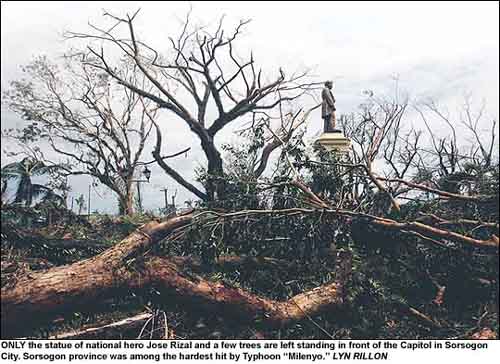
02.10.2006 Der Taifun wütete am
schlimmsten in der Region Sorsogon die Heimat von Jane und Kirsten.
Durch den Taifun starben ca 200 Menschen. Millionen haben immer noch
kein Strom und Wasser.
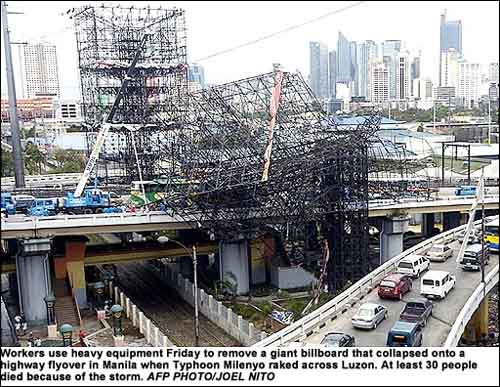
29.09.2006 Taifun in der Region Manila und
South Bicol
|
28.
September 2006
Ein schwerer Taifun fegte über die Philippinen und knickte im
Bereich unseres Partnerkirchenkreises
- Legazpi mit Mt. Mayon - viele Bäume und Strommasten um.
Weite Landstriche sind für Tage ohne Strom.
Der Sturm zog weiter nach Norden bis Manila.
|

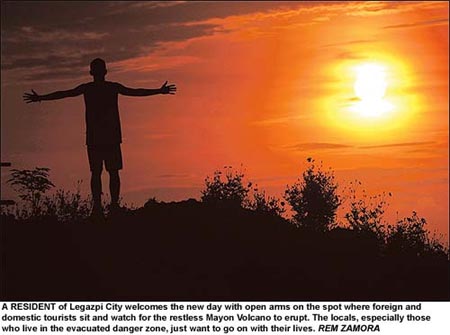
02.09.2006 Sonnenaufgang am ruhelosen Mt
Mayon, der von Touristen beobachtet wird.
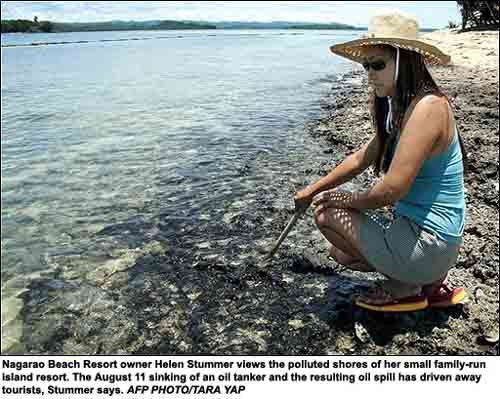
29.08.2006
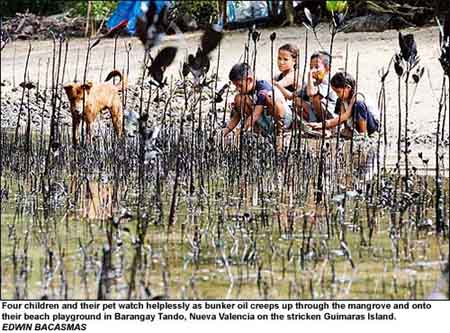
26.08.2006 Der Mayon ist ruhig,
dafür gibt es weiter südlich eine
Ölkatastrophe.
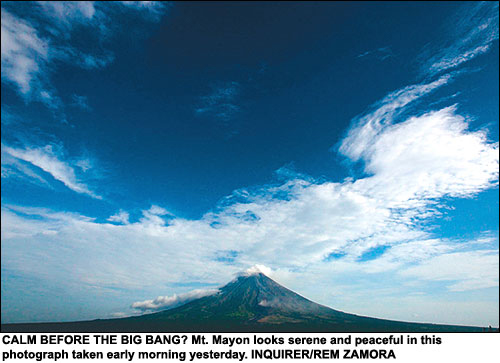
23.August
Ruhe vor dem großen Knall.
Der Mt Mayon sieht auf diesem Foto vom frühen Morgen ruhig und
friedlich aus.
|
Arroyo
visits Mayon
First posted 12:37pm (Manila time) Aug 12, 2006
LEGAZPI CITY – President Gloria Arroyo visited simmering
Mayon Volcano Saturday promising more aid for nearly 40,000 people
evacuated from their homes amid fears of a major eruption.
|
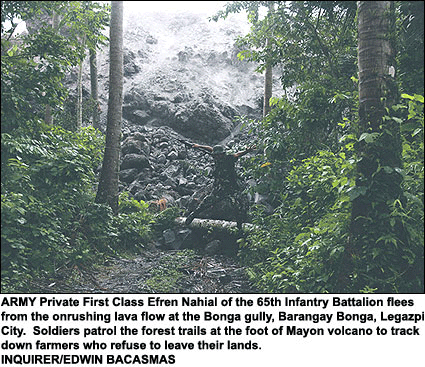
10.August
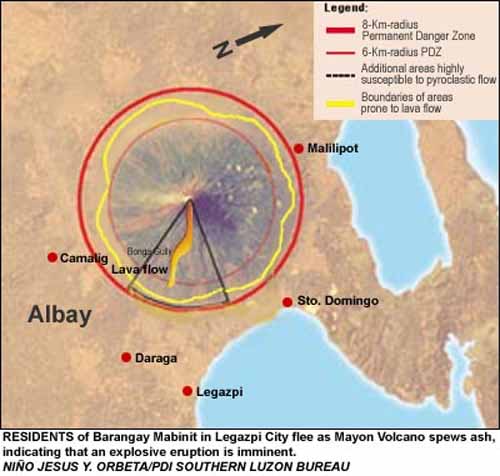
8.August
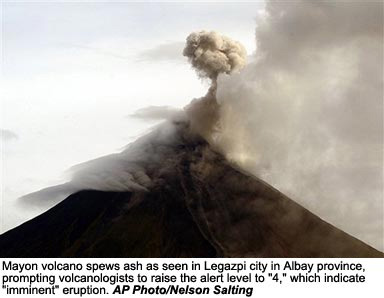
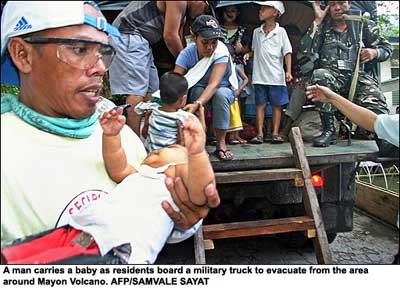
6.+7.August
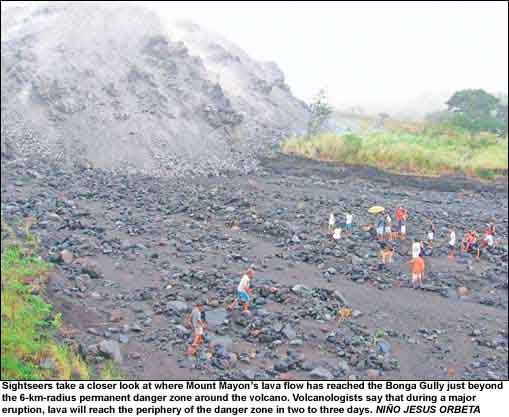
30.Juli
|
Volcanologists predict that the Mayon volcano will
have a big
explosion this week or within the month. This is because of its
consistent lava flow and magma activity in the past weeks. We pray
that it won't be that destructive since our native people who live on
this mountain get their living and sustainance on the agriculture along
the slopes of Mt. Mayon... |
|
Mayon volcano is one of the most active
volcanoes in the world. It used to erupt every 10 years but now the
interval has gotten shorter, between 3 to 5 years. We believe it's
better that it's active unlike the Mt. Pinatubo in Central Luzon in the
Philippines which erupted after 600 years! That truly devastated
Central Luzon, thousands of houses were buried under the mudflow and
the land has not been productive after that... |
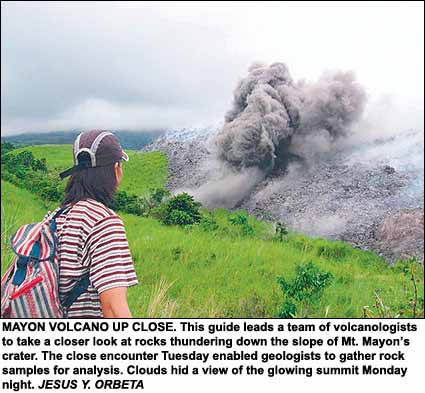
24.Juli
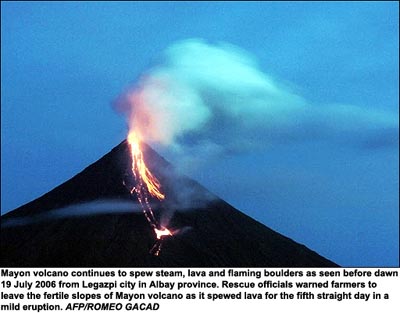
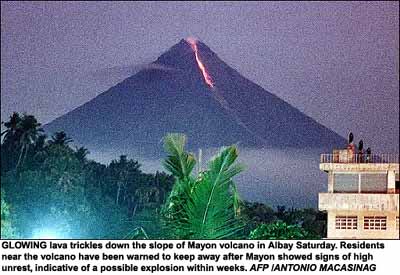
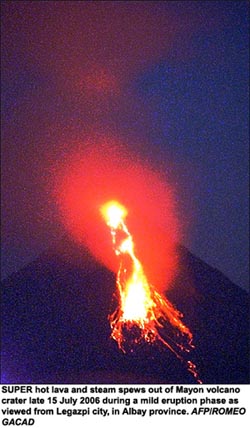
Der Vulkan Mayon in unserem
Partnerkirchenkreis auf den Philippinen ist wieder
ausgebrochen.Bilder von Samstag,15.07., und Sonntag,16.07..



















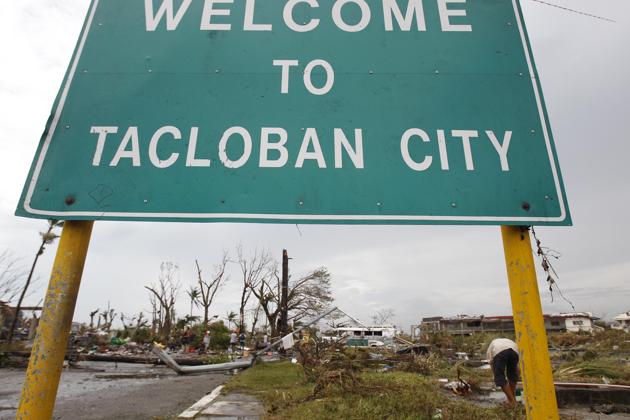
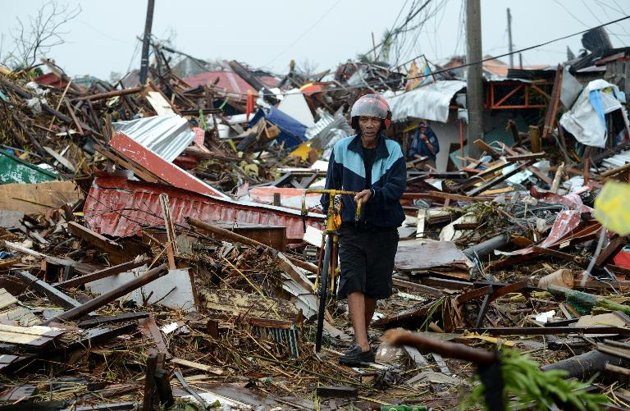
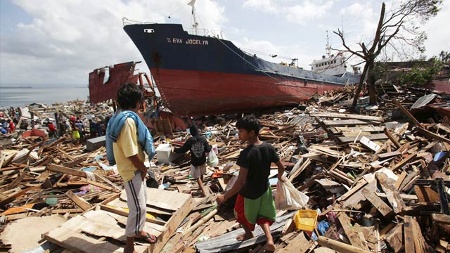














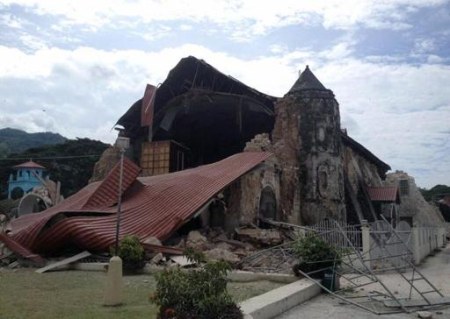 Loboc church
Loboc church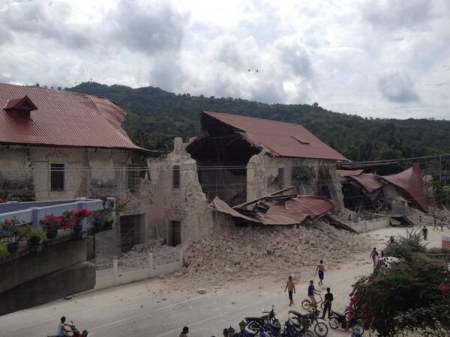
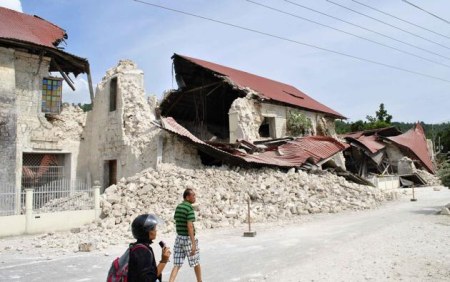
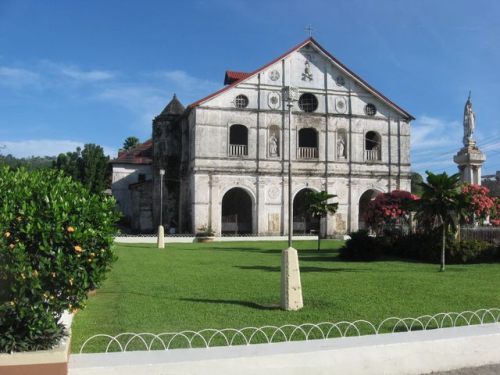
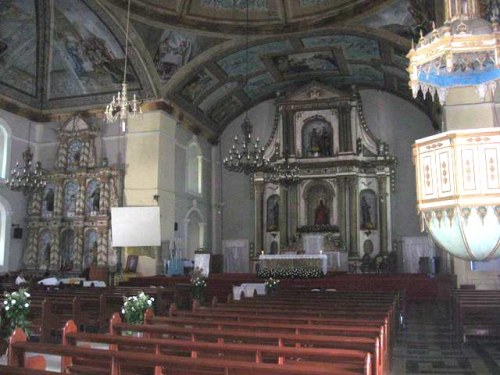
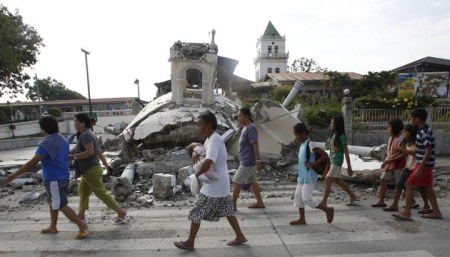 Tubigon church
Tubigon church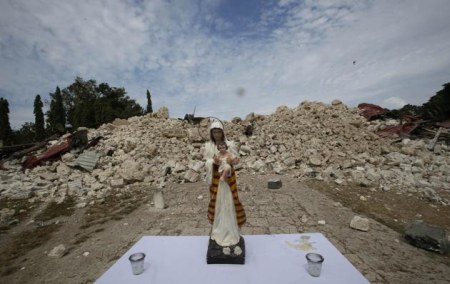 Loon church
Loon church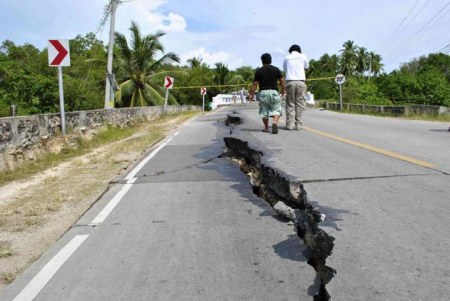
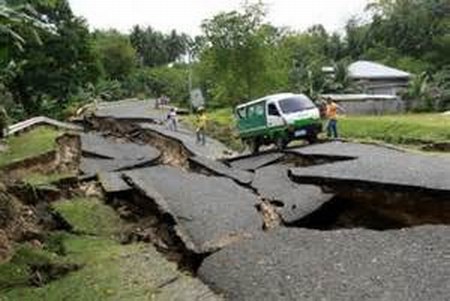
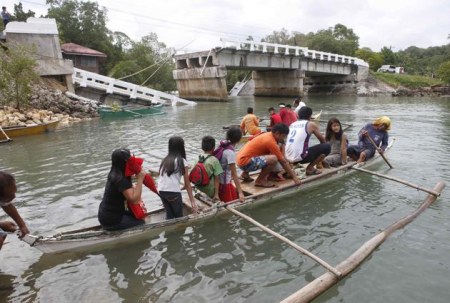
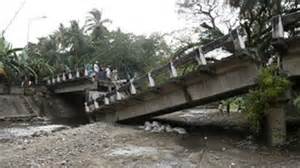
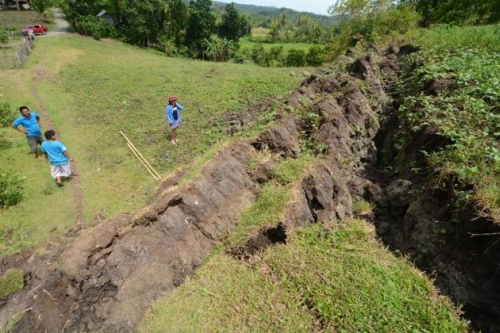
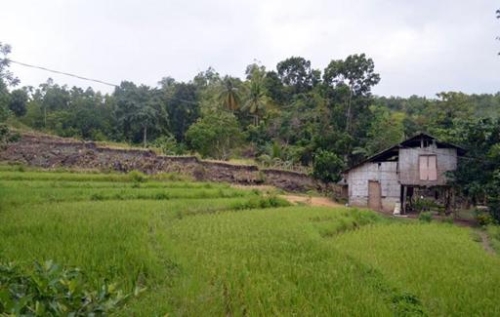


















































 -
-
 -
-
 -
-
 -
-
 -
-
 -
-

 -
-

 -
-
 -
-
 -
-
 -
-


 -
-
 -
-

 -
-


































